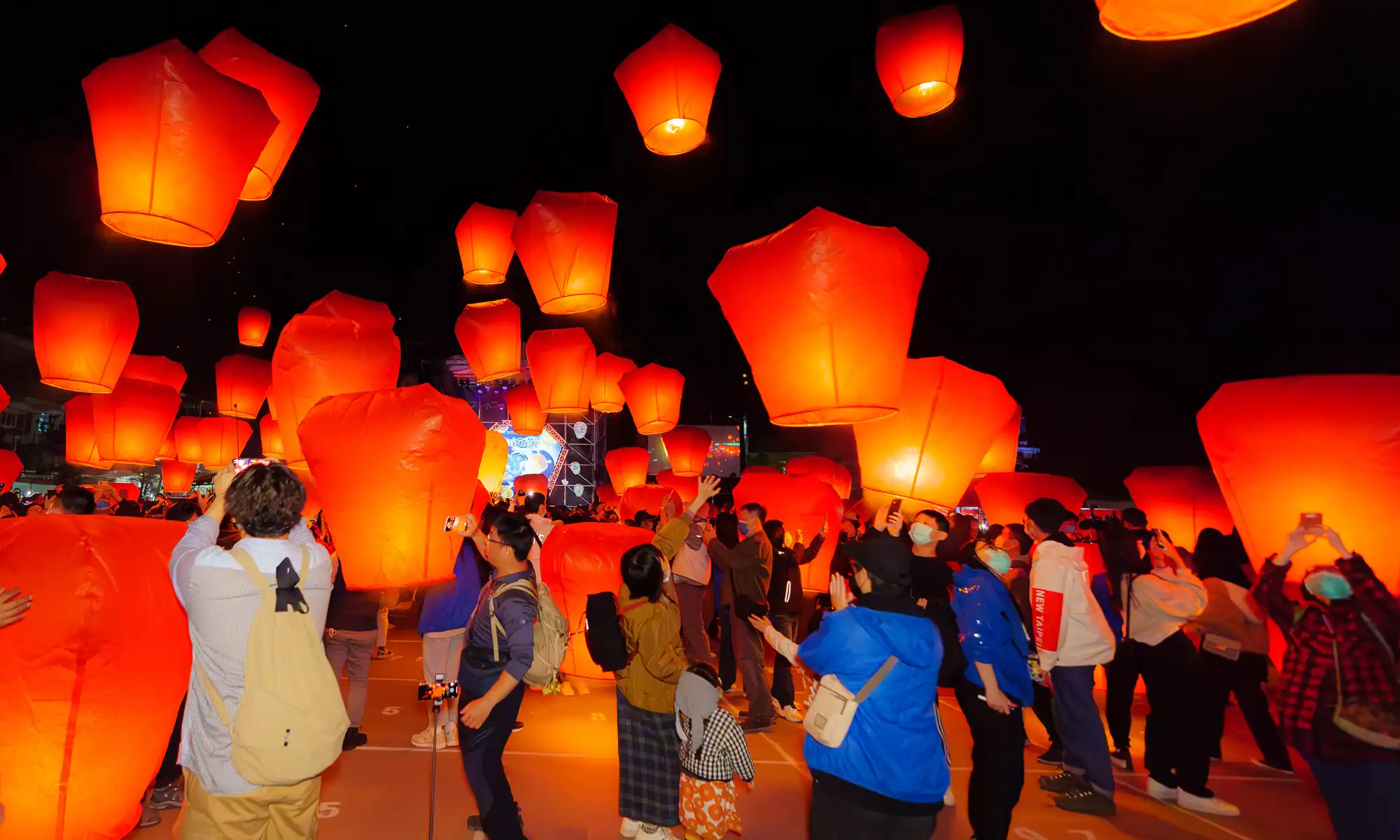An Insider’s Guide to New Taipei City – Pingxi and Ruifang
A mere stone’s throw from Taipei, the rural districts of Pingxi and Ruifang are home to several must-visit old streets, a handful of scenic mountain villages, a beautiful rail line, and two of New Taipei’s most well-known day trip destinations: the towns of Jiufen and Shifen, both famous for their lively atmosphere, historic scenery, and surrounding nature.
Most of the attractions in Pingxi can be accessed either by car, bus or the scenic Pingxi Rail Line which runs along the Keelung River. The Railway does not reach Shenkeng Old Street however, which is more easily accessed from southern Taipei.
The Pingxi Rail Line can be ridden all the way from the towns of Pingxi or Shifen to the old mining town of Houtong, now better known as Houtong Cat Village in the Ruifang District. From there, it’s best to take a taxi to explore the rest of the sights: Jiufen, Golden Waterfall, the Gold Museum, and the Yinyang Sea.
While in the area, if time allows, consider exploring some of the sights along Taiwan’s North Coast. Finally, remember to leave time in your itinerary for two quintessential Taiwanese experiences: visiting a mountainside tea house in Jiufen, and launching a sky lantern in either Shifen or Pingxi.
If you want to save time planning, we offer several tours that combine the best of the North Coast and the Pingxi and Ruifang Districts. For a full day option, check out our North Coast, Jiufen and Shifen tour, or if you’re in a rush, consider our the essential North Coast and Jiufen tour which allows you to experience as many amazing sites as possible in an afternoon.
For a more in-depth experience, please contact us with a list of your must-visit destinations and allow us to craft a customized private tour of New Taipei for you.
Jiufen Old Street
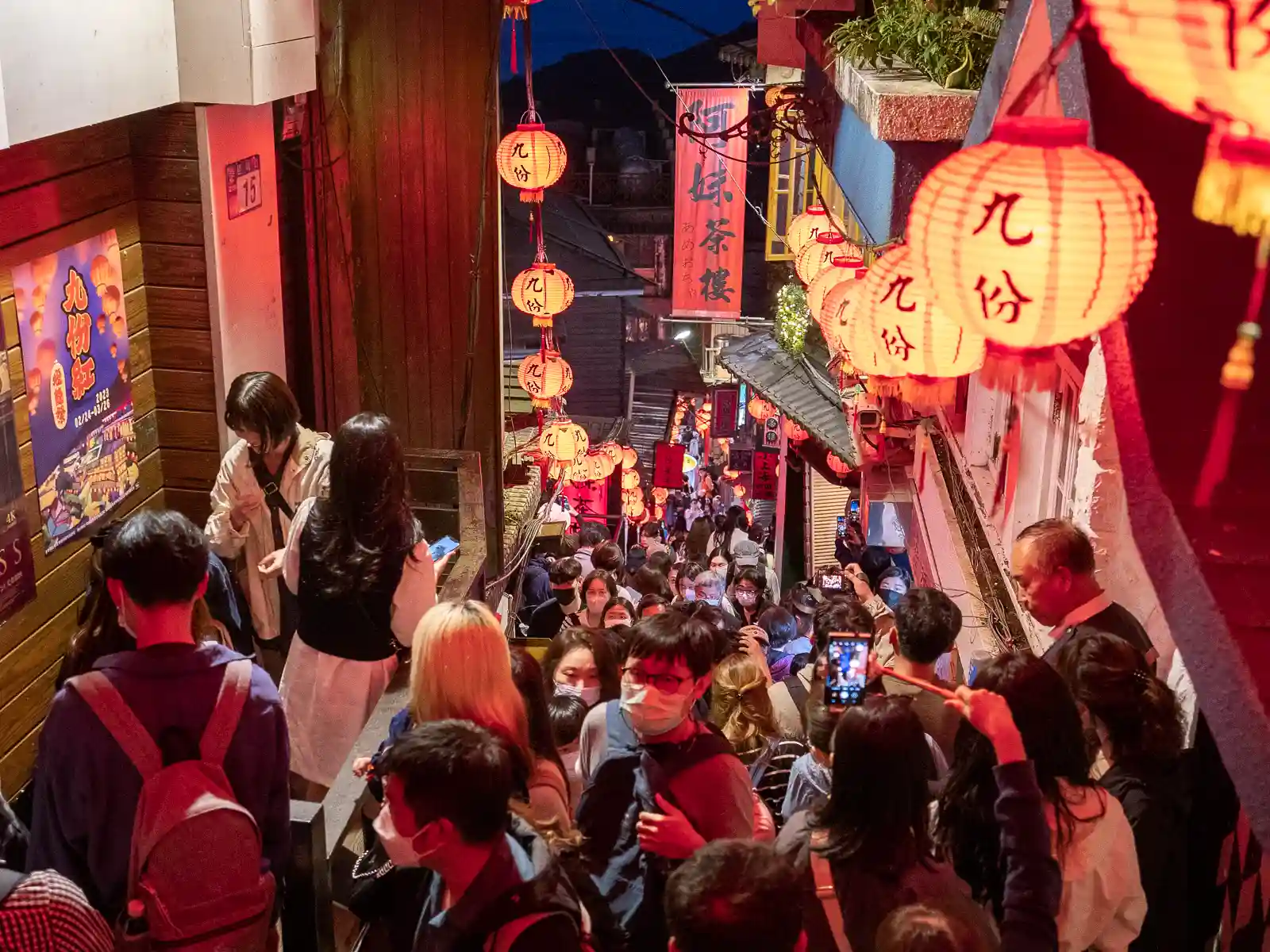
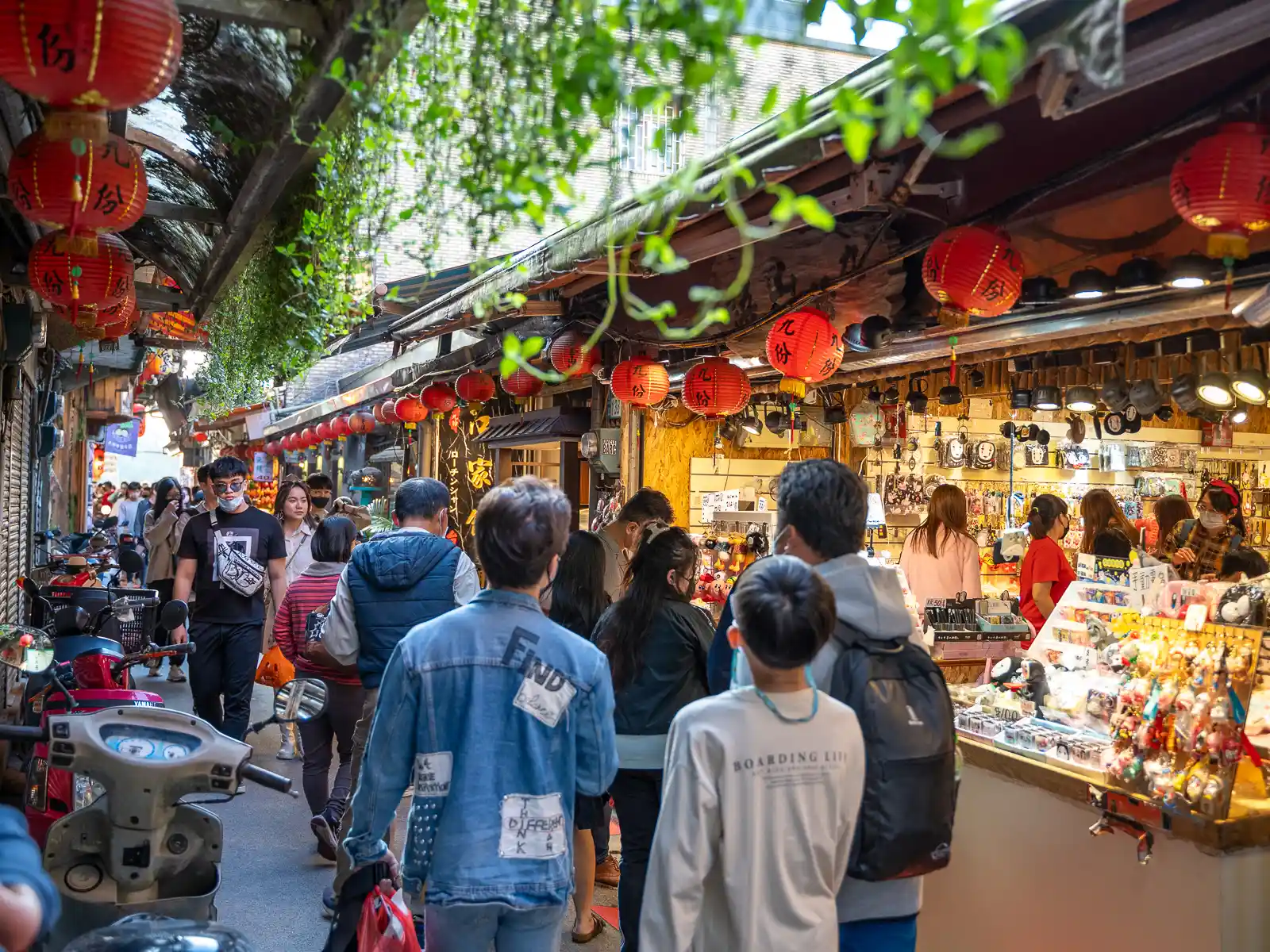
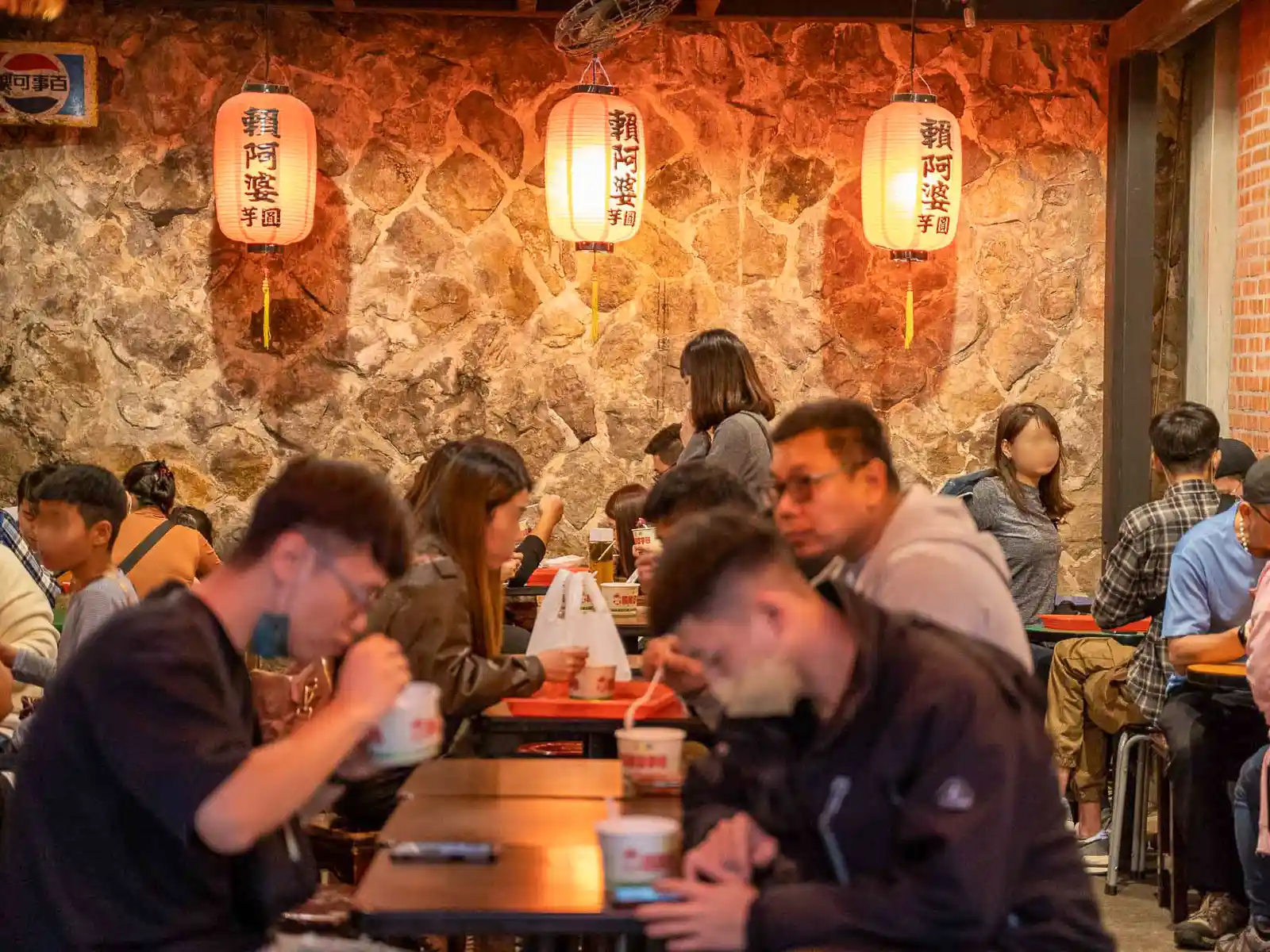
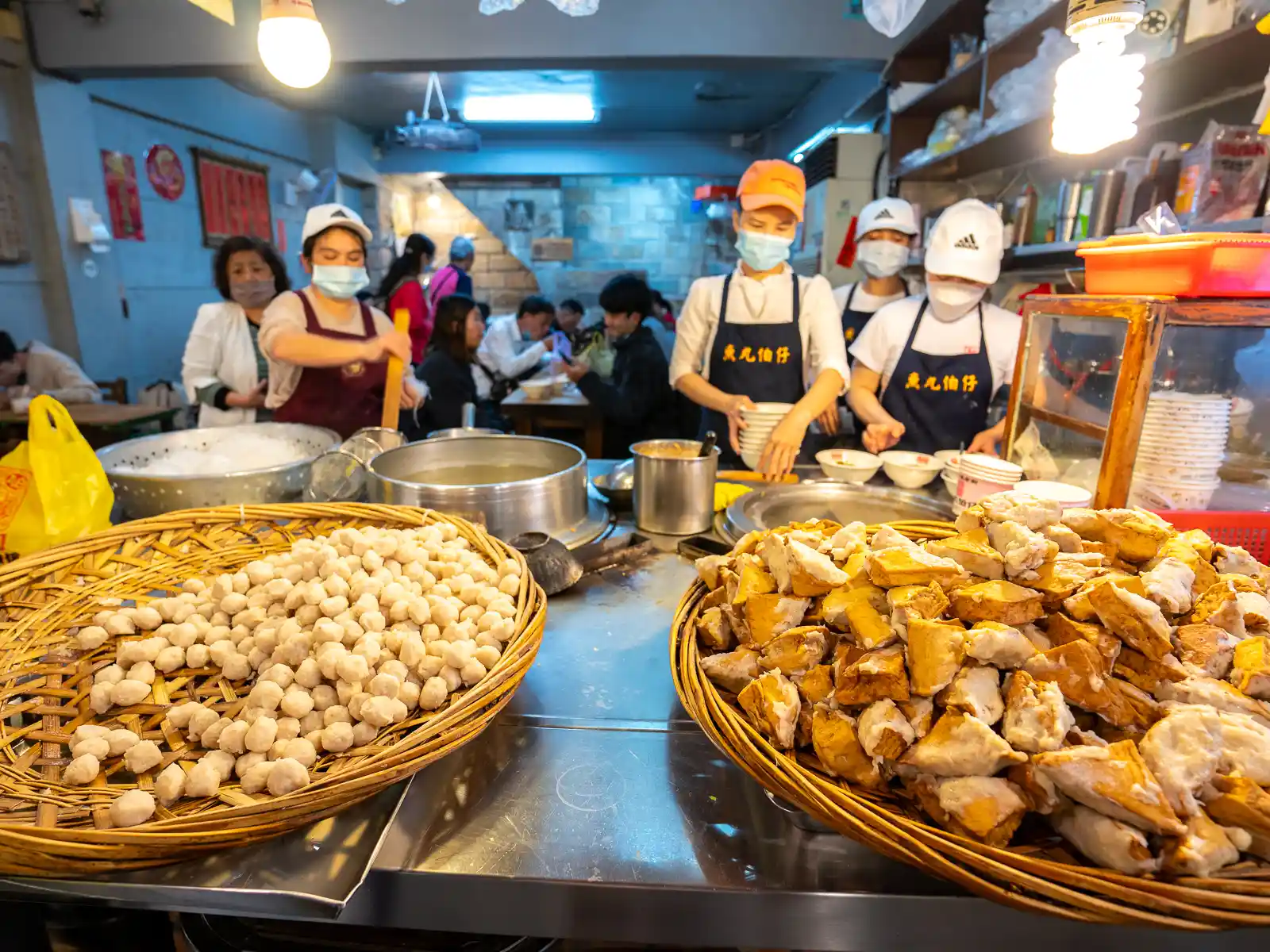
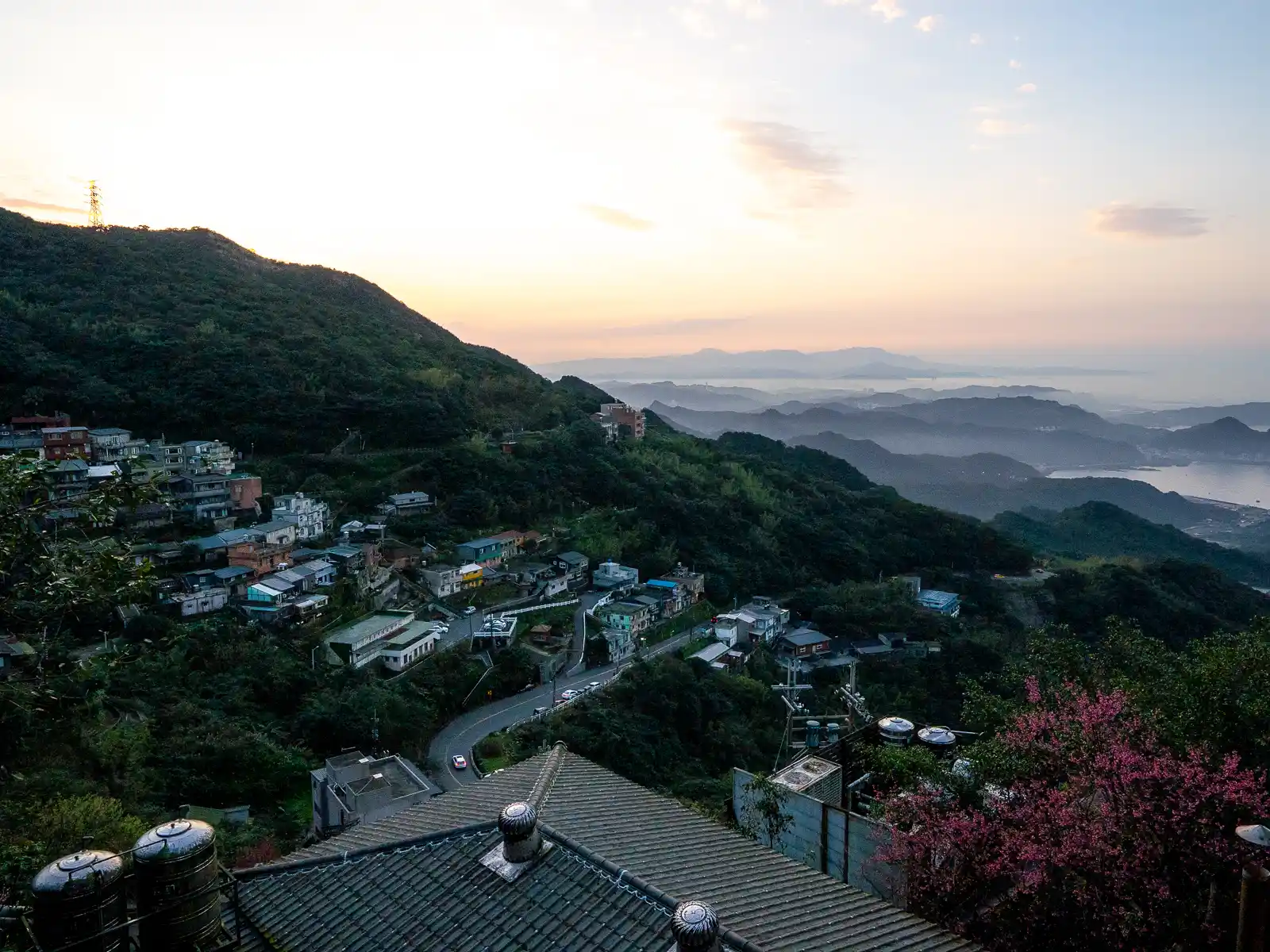
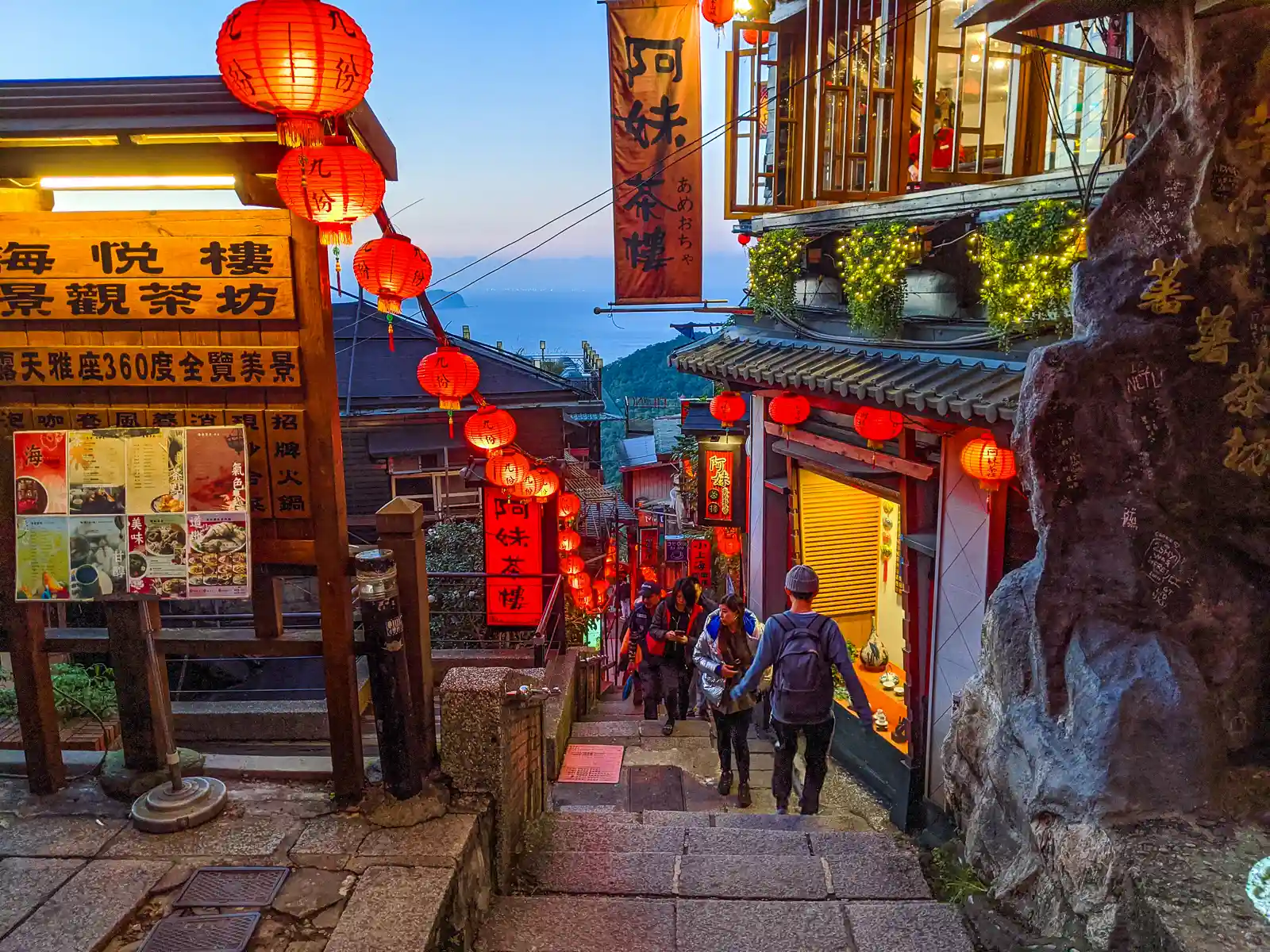
Perhaps Taiwan’s most popular historic street, Jiufen Old Street is criss-crossed by steep alleys and decorated with rows of charming red lanterns. In this former mining town, many of the old houses have been converted to tea houses and restaurants with unbeatable and expansive views of the Northern Coast below.
Being located in a mountain town, Jiufen Old Street’s character comes from its winding nature and lively atmosphere. In the evenings, be prepared to flow with the crowd while slowly visiting the shops and stalls on either side of the street. The street starts at the 7-11 just beside the bus stop, and follows a winding path through the heart of the town, passing by numerous lanes and staircases, each of which appears to be an adventure of its own. On either side of the street, shops and eateries sell everything from local snacks, to traditional confections, hand-made soap, and souvenirs.
When the street intersects with the long staircase that is Shuqi Road you’re about halfway through. From the intersection, follow the stairs of Shuqi Road down to visit the famous A-mei Tea House, or continue forward to keep exploring the second half of the street and eventually reach Jioufen Teahouse. (Don’t leave Jiufen without having dined in a tea house!)
A-MEI Tea House
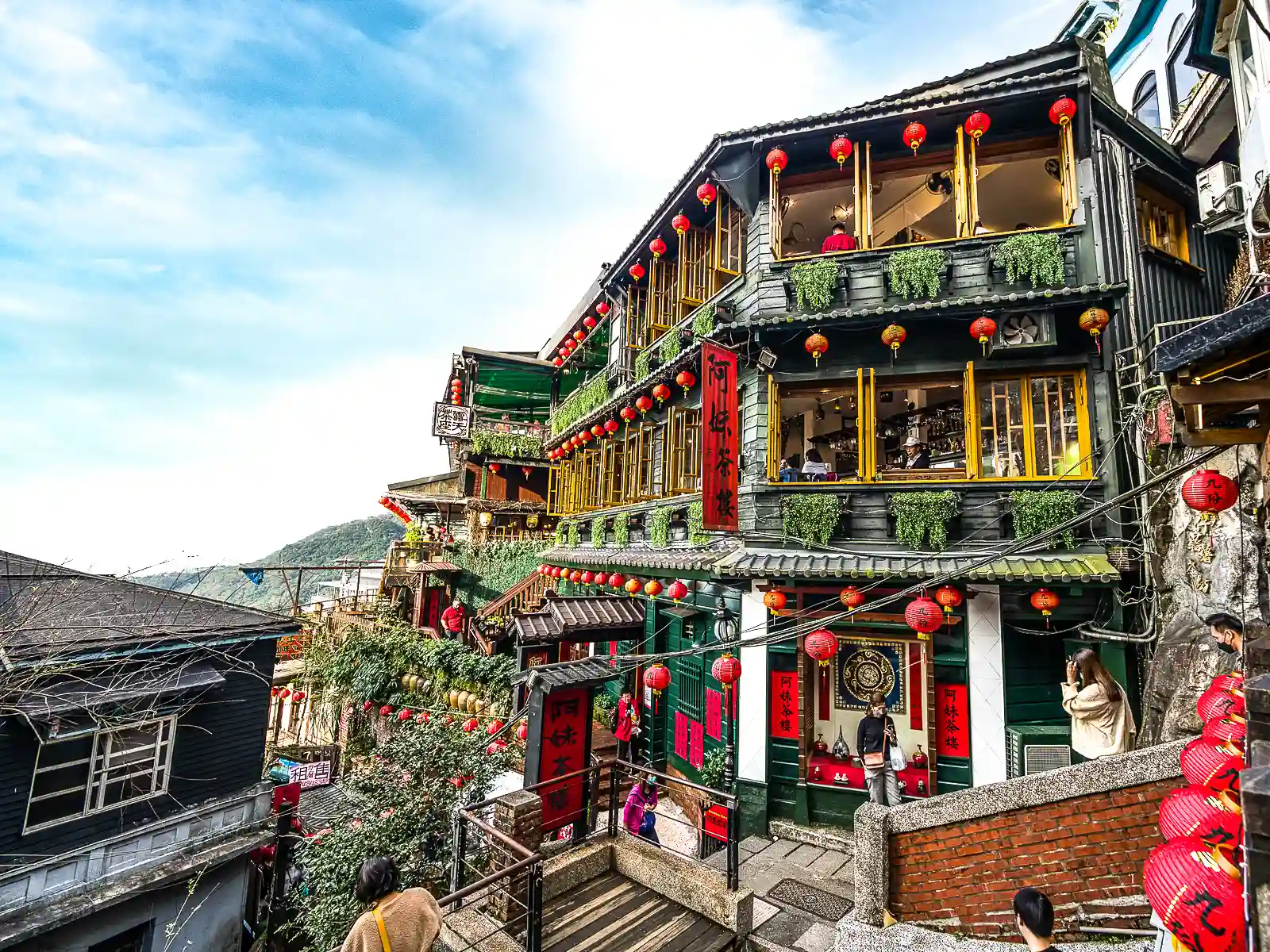
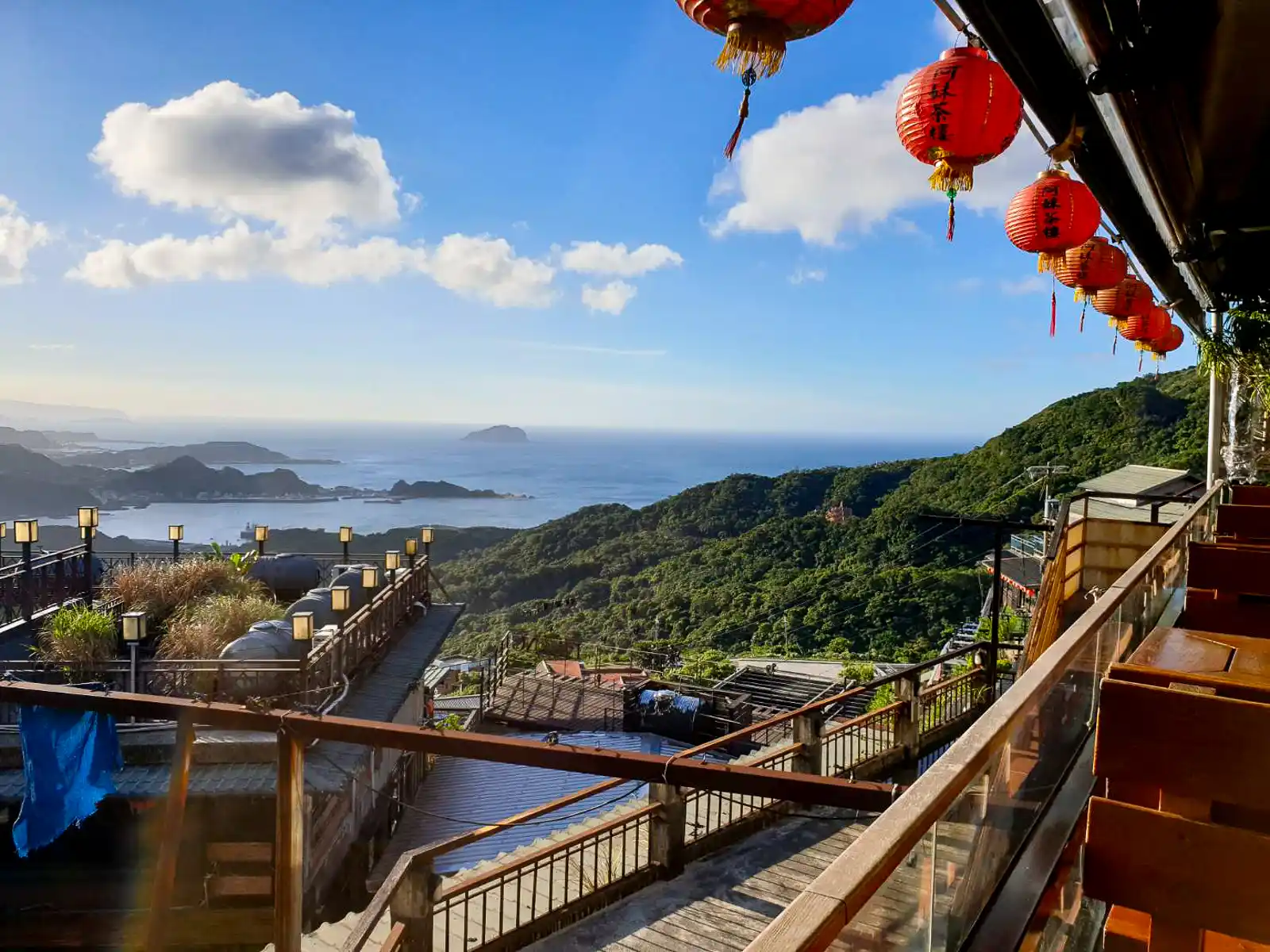
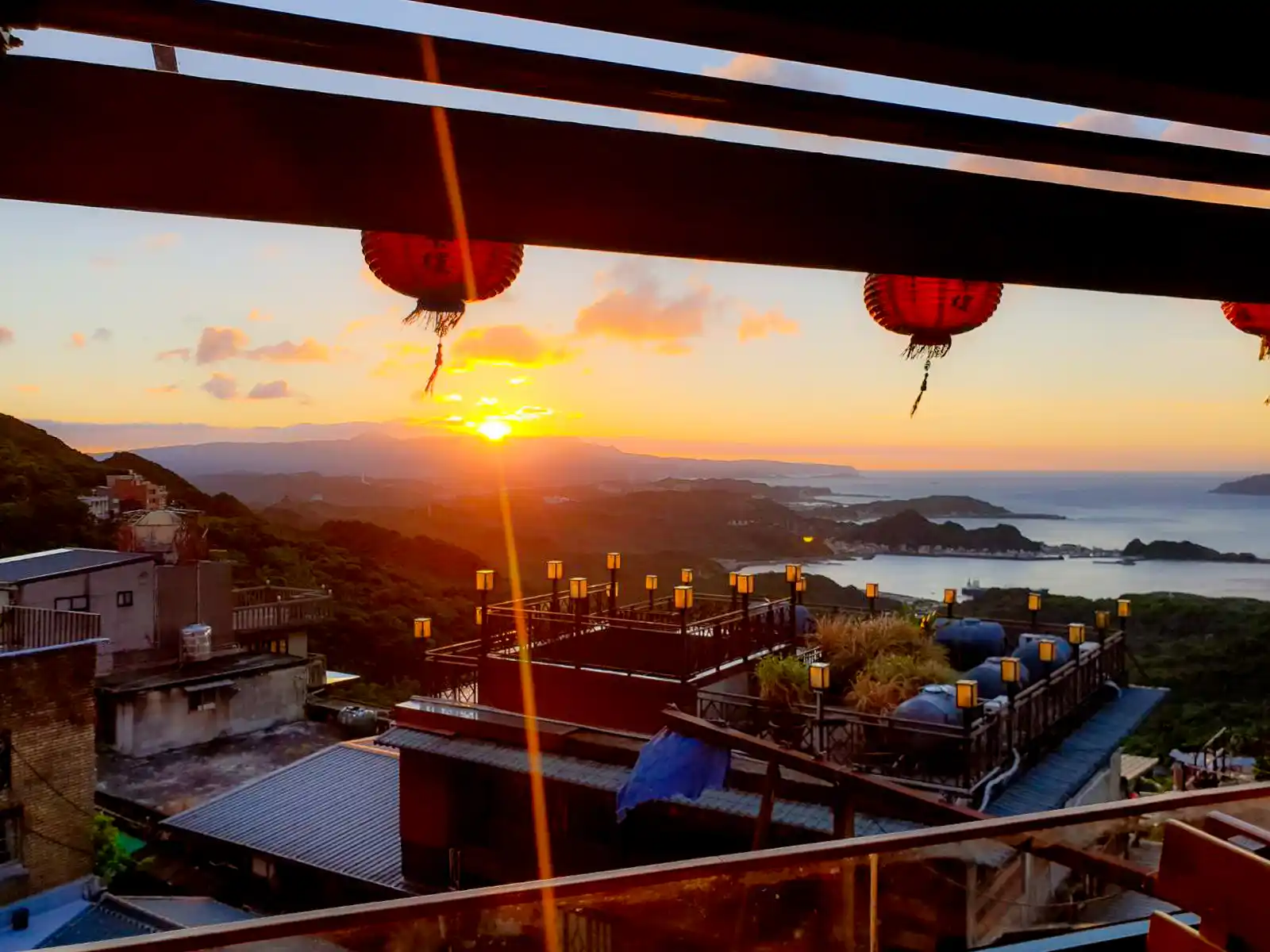
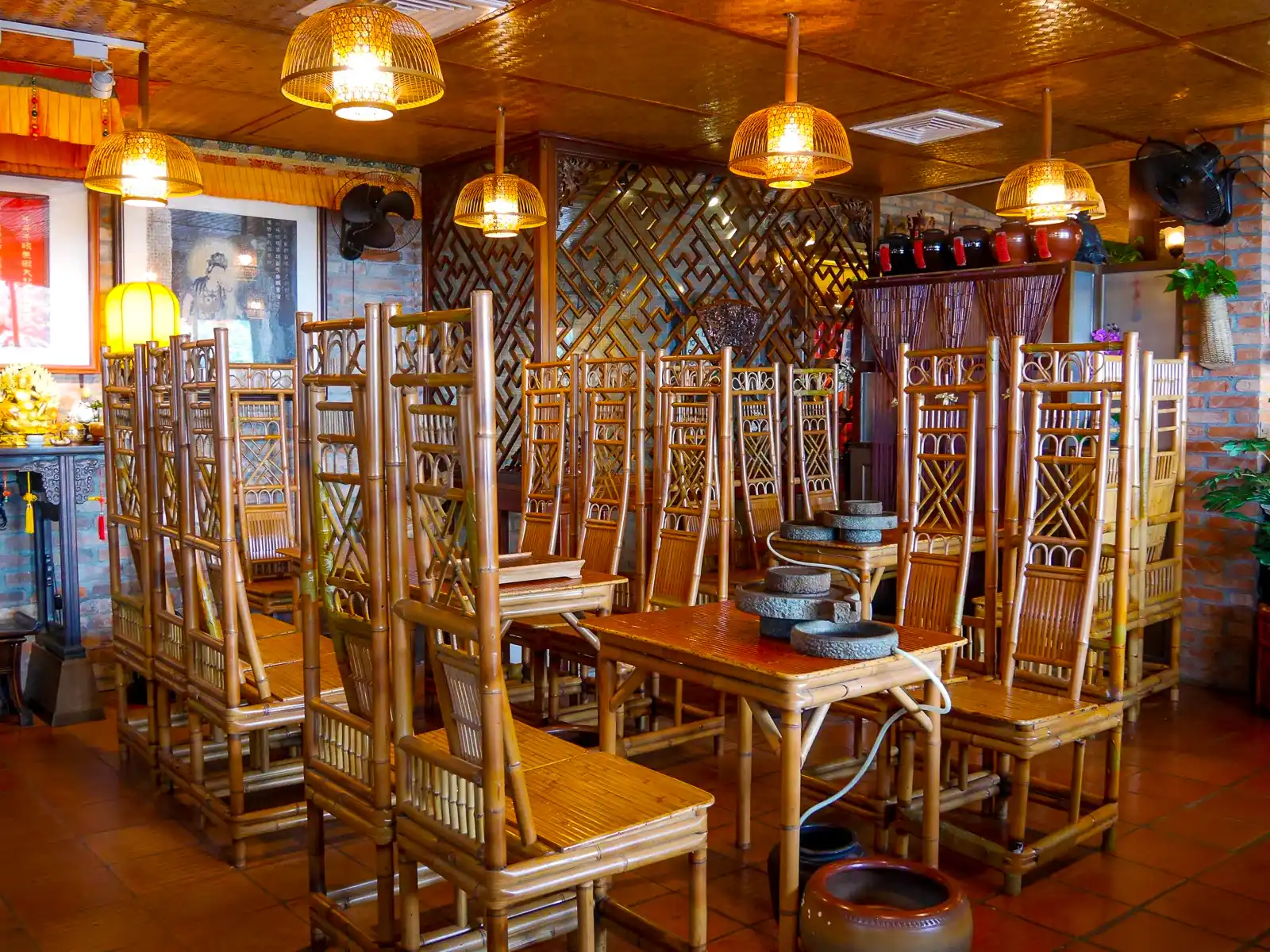
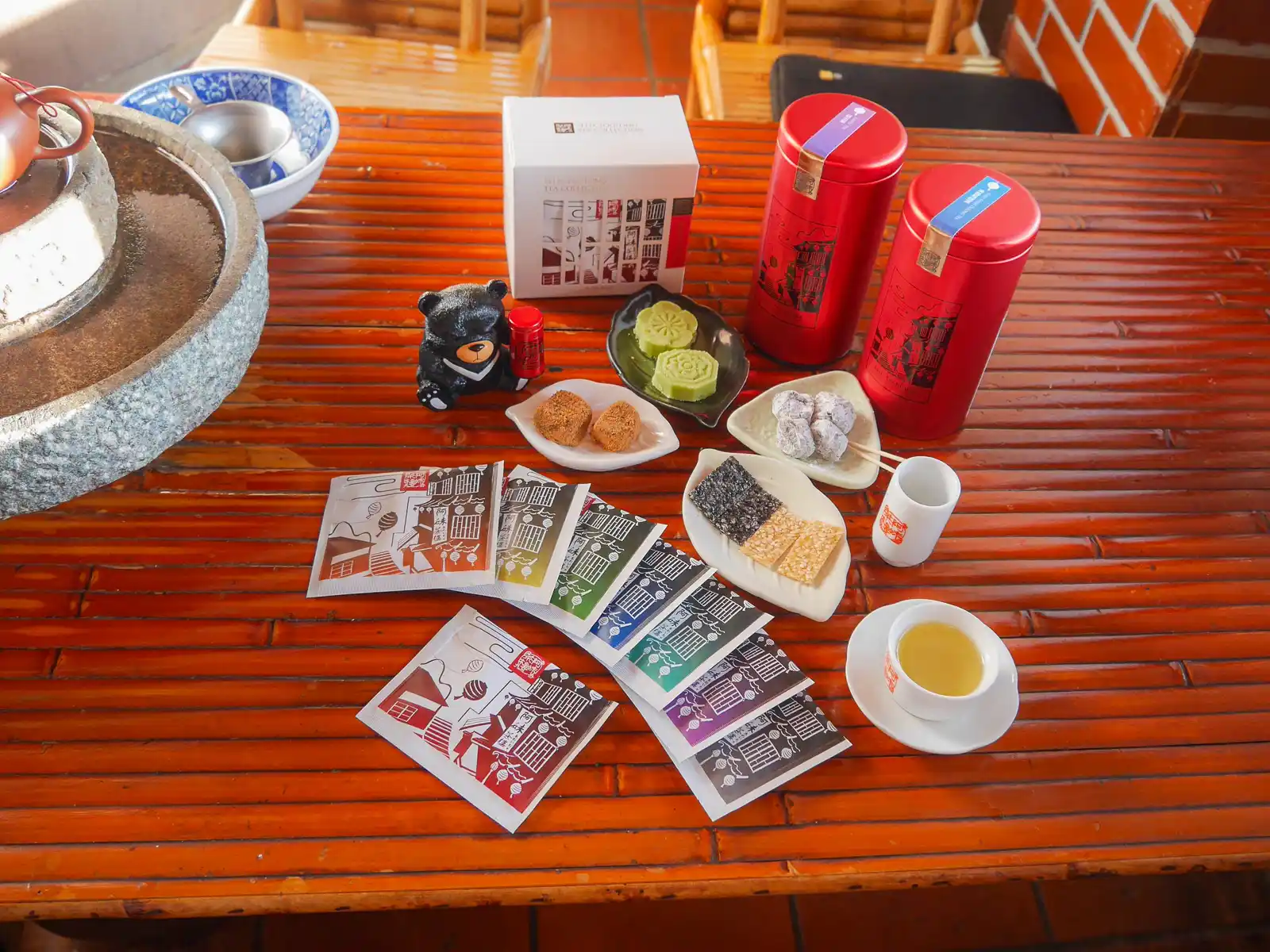
The lantern-decorated balcony of the A-mei Tea House is one of Jiufen’s most iconic scenes. It’s so beautiful that most visitors will first look for the perfect angle from which to take their selfie before heading inside, often creating a little traffic jam on this part of Shuqi Road.
Inside A-mei Tea House, which used to be a blacksmith’s shop run by A-mei’s grandfather, everything from the furniture to the vintage brown-colored window frames embodies the charming nostalgia that makes Jiufen special.
The tea house has multiple floors open for dining and tea brewing, as well as an open-air tea terrace. Almost every table has an enchanting view of the mountains below and the coastline far off in the distance.
Jioufen Teahouse
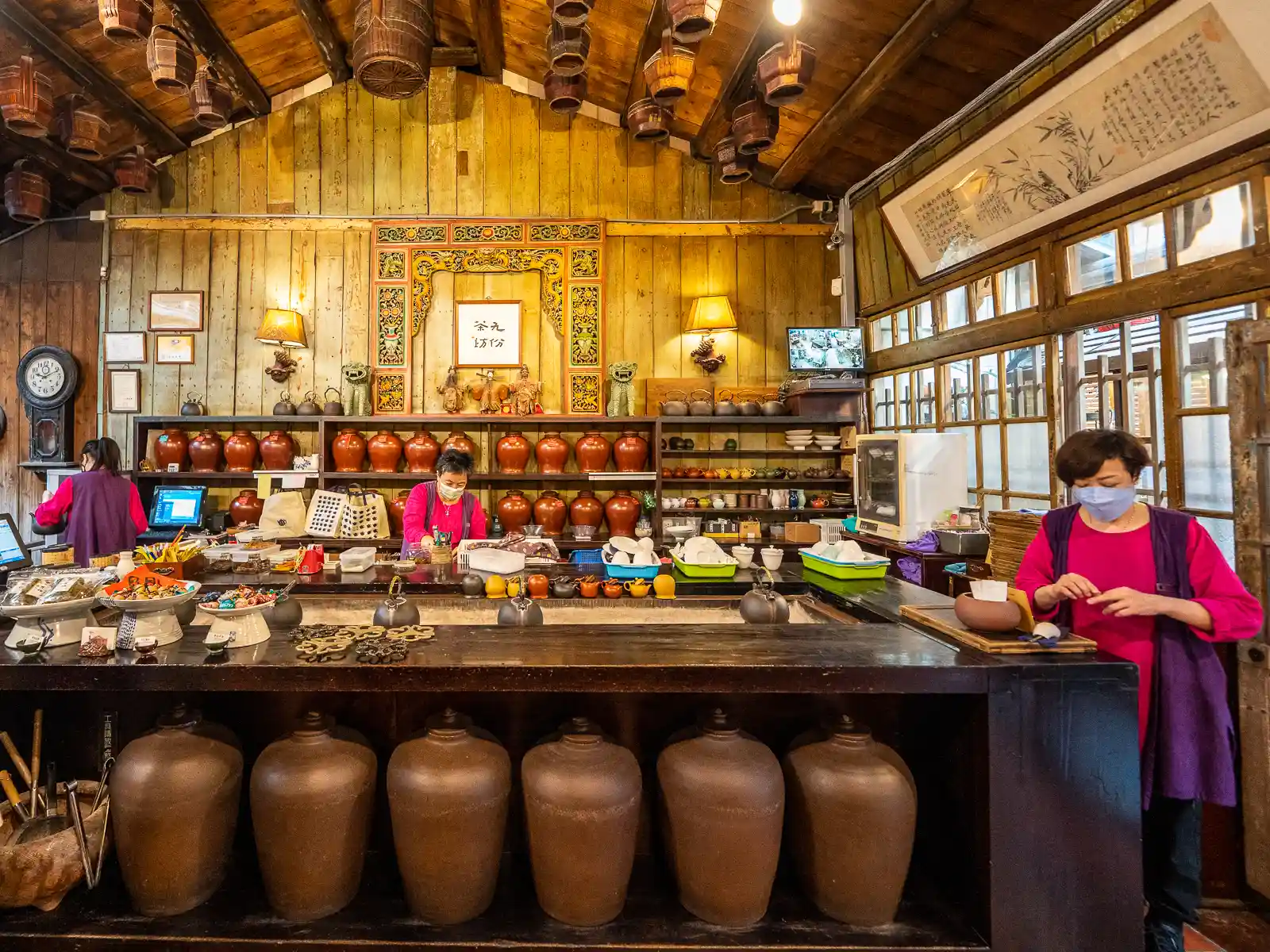
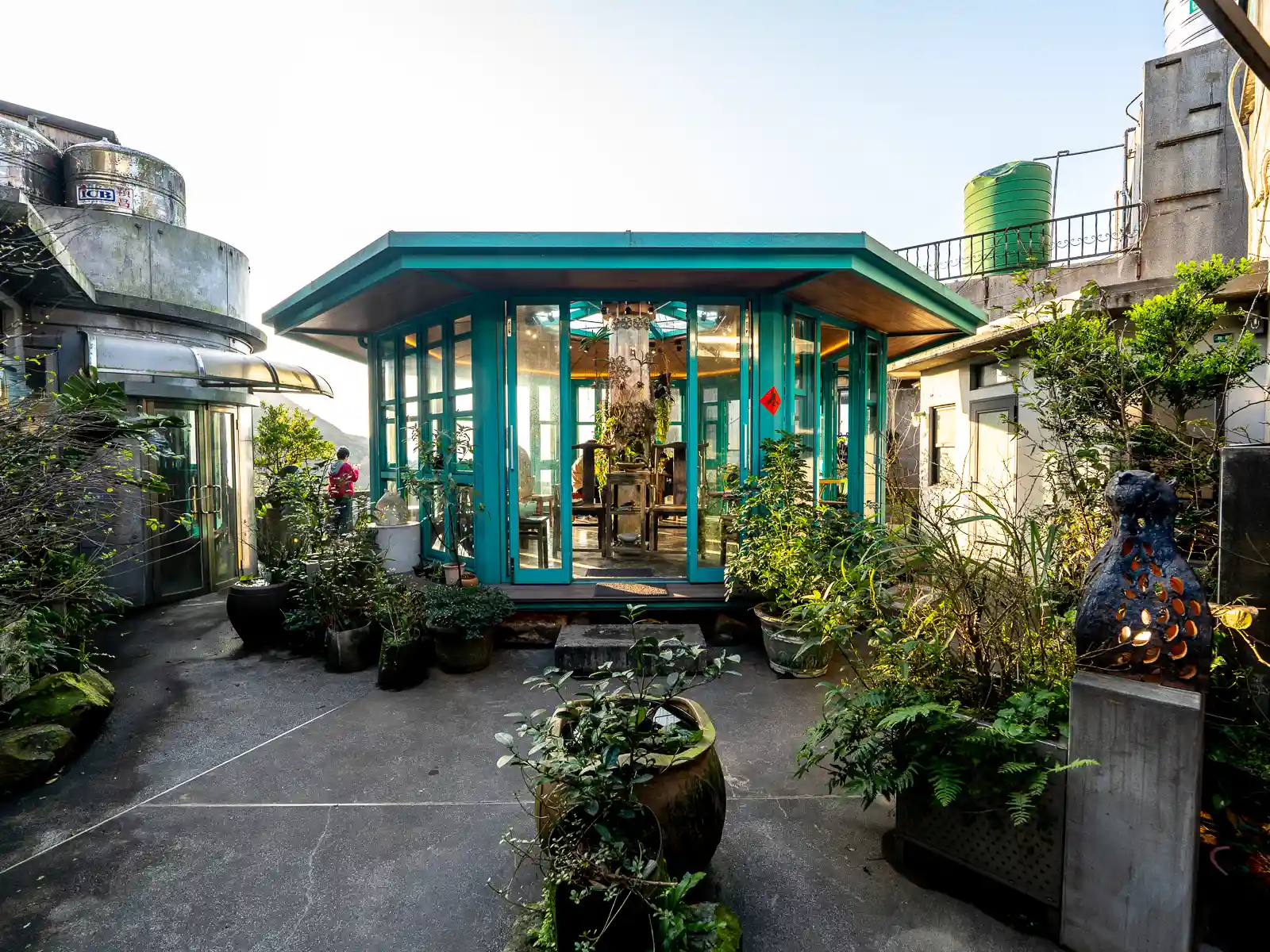
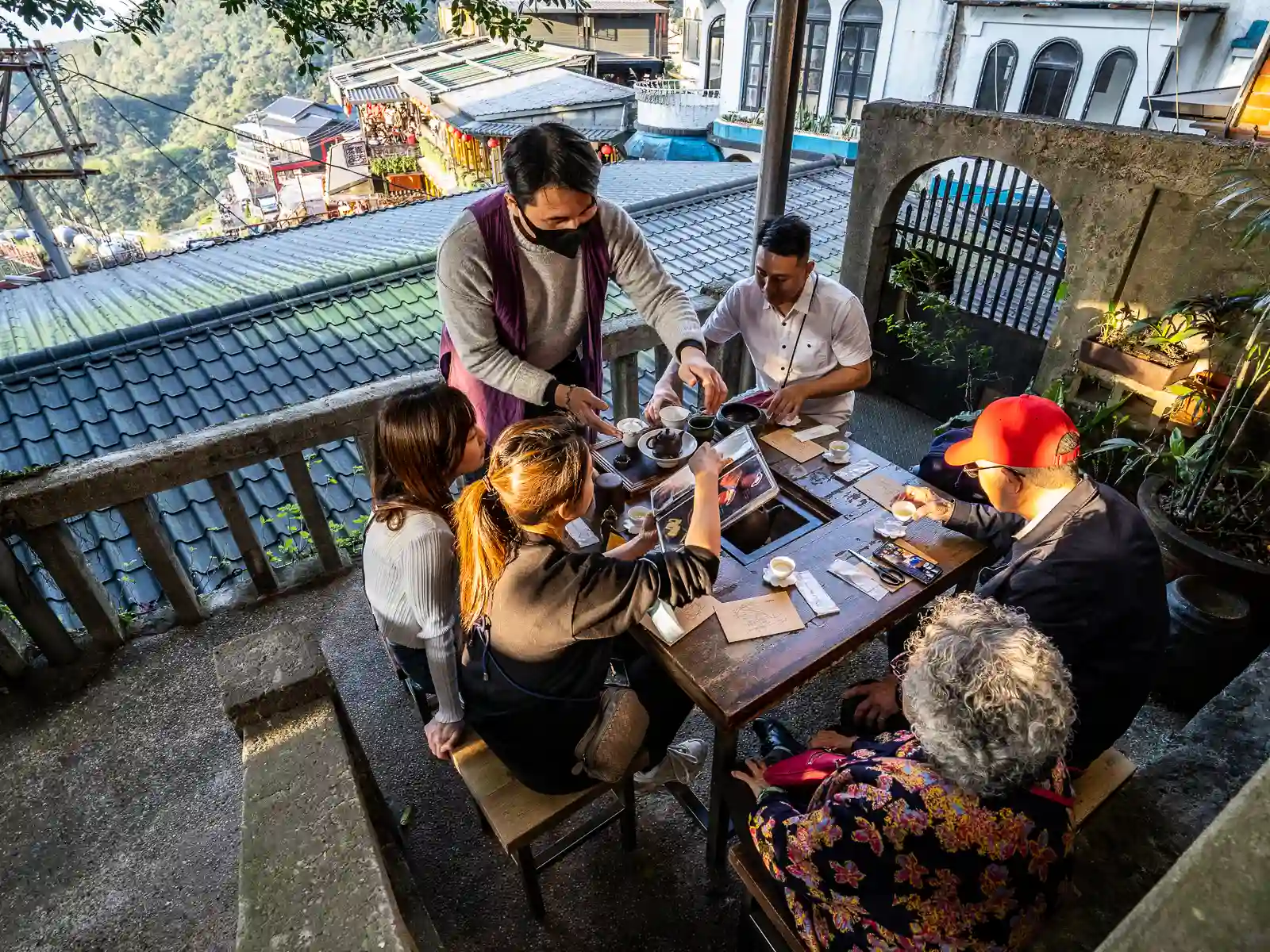
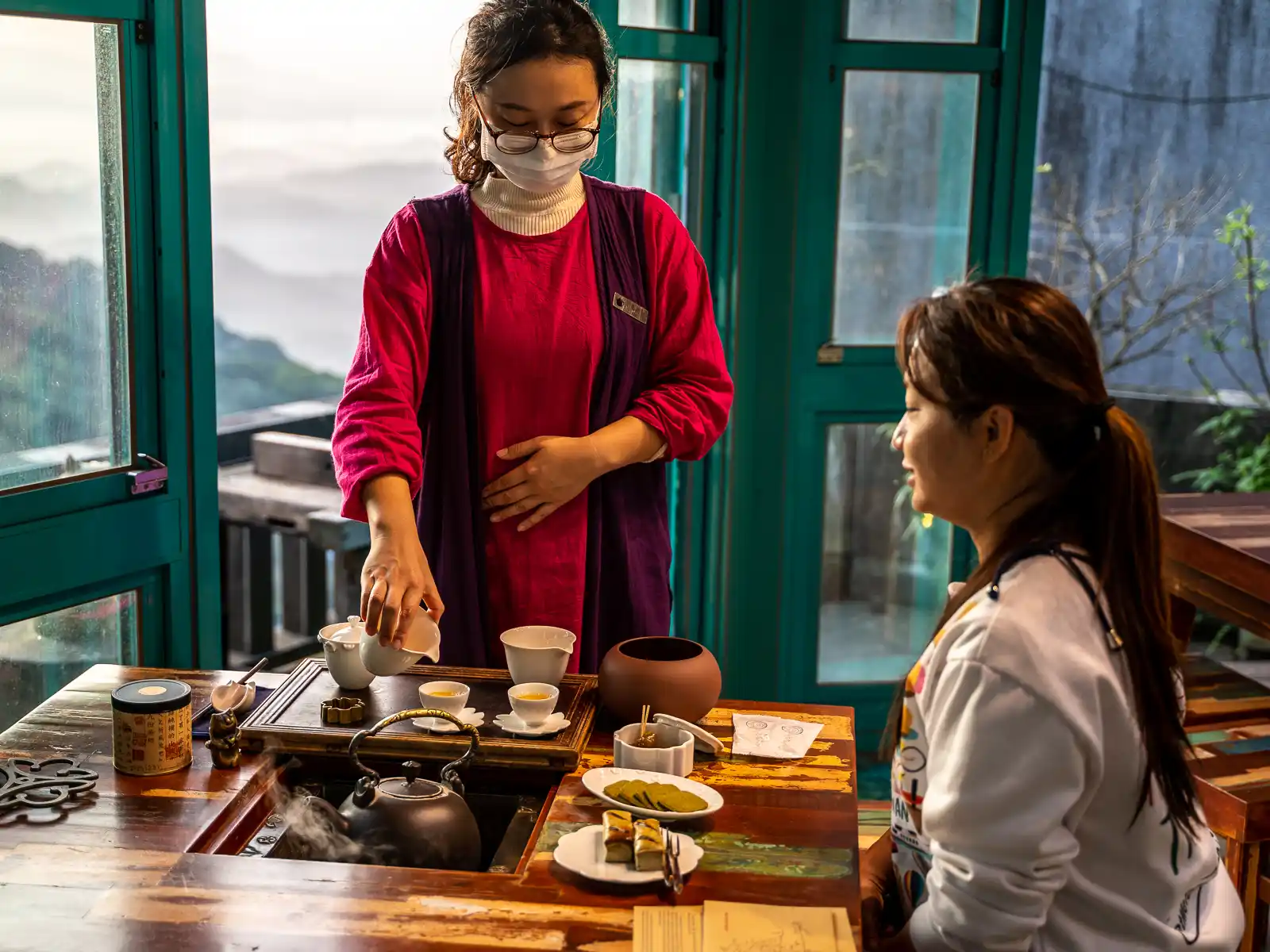
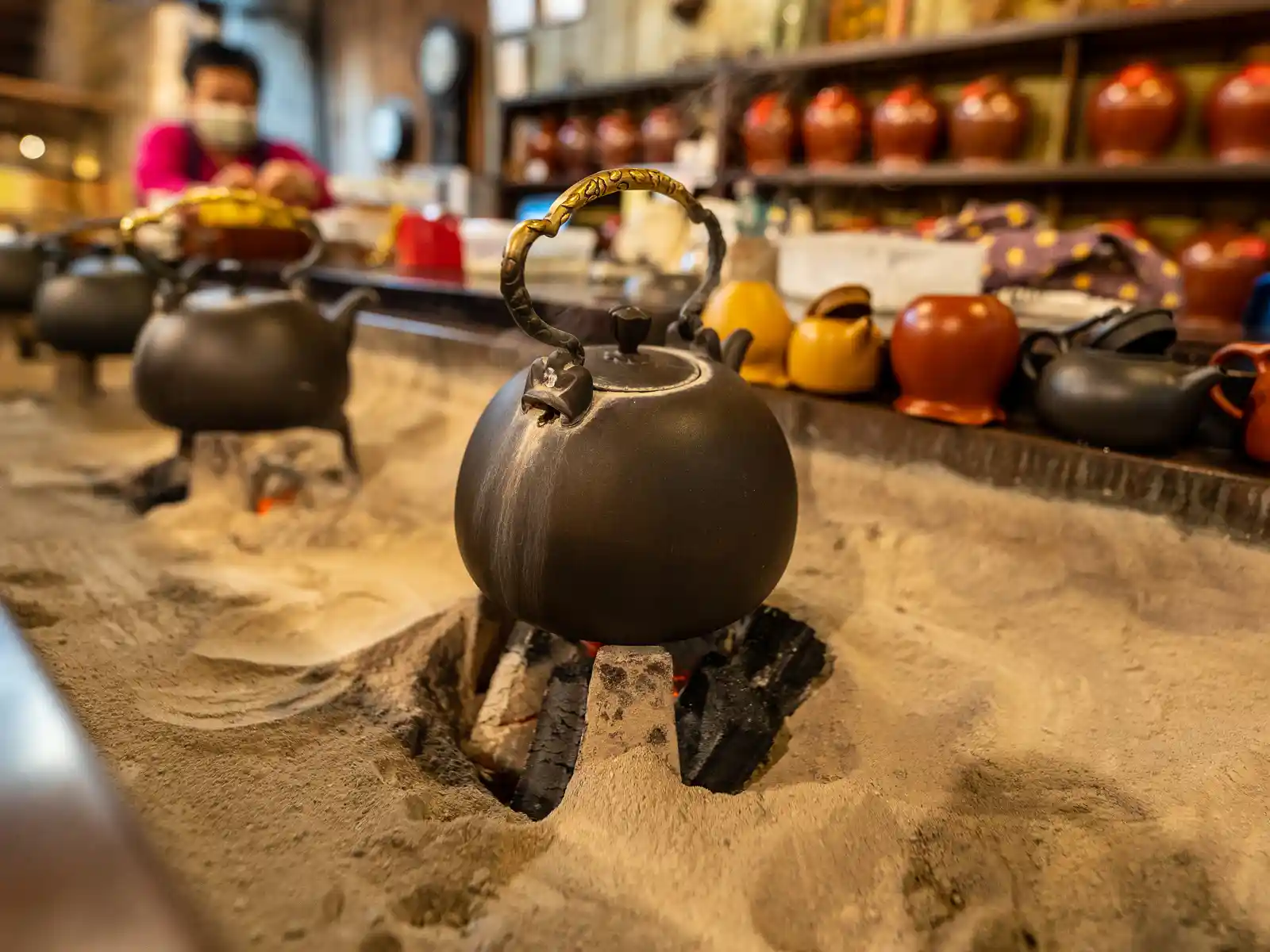
Of the two dozen tea houses in Jiufen, the historic Jioufen Tea House (also known as the “Jiufen Teahouse”) is a must-visit for anyone interested in tea culture, historic architecture or sightseeing. Located in a renovated 100-year-old building that was once the residence of a mine owner, the tea house features two floors with indoor seating, an outdoor patio, and a bright outdoor octagonal tea room made entirely from glass.
Due to its location slightly further down the old street, and its unassuming nature, the atmosphere here is usually a little quieter than the A-mei Tea House.
On fair weather days, the tea house’s outdoor patio offers an unbeatable view of the North Coast and has the feeling of a chill rooftop bar which offers an exclusive view of the world underneath you. Conversely, an indoor table provides an atmosphere akin to a private room in a speakeasy or lounge.
Many varieties of Taiwanese tea are available, and guests are also allowed to bring their own tea leaves and only pay for brewing water. While delightful tea-flavored snacks are offered, the tea house does not serve lunch or dinner and the primary emphasis remains on fostering a space for tea appreciation and engaging conversation.
Golden Waterfall

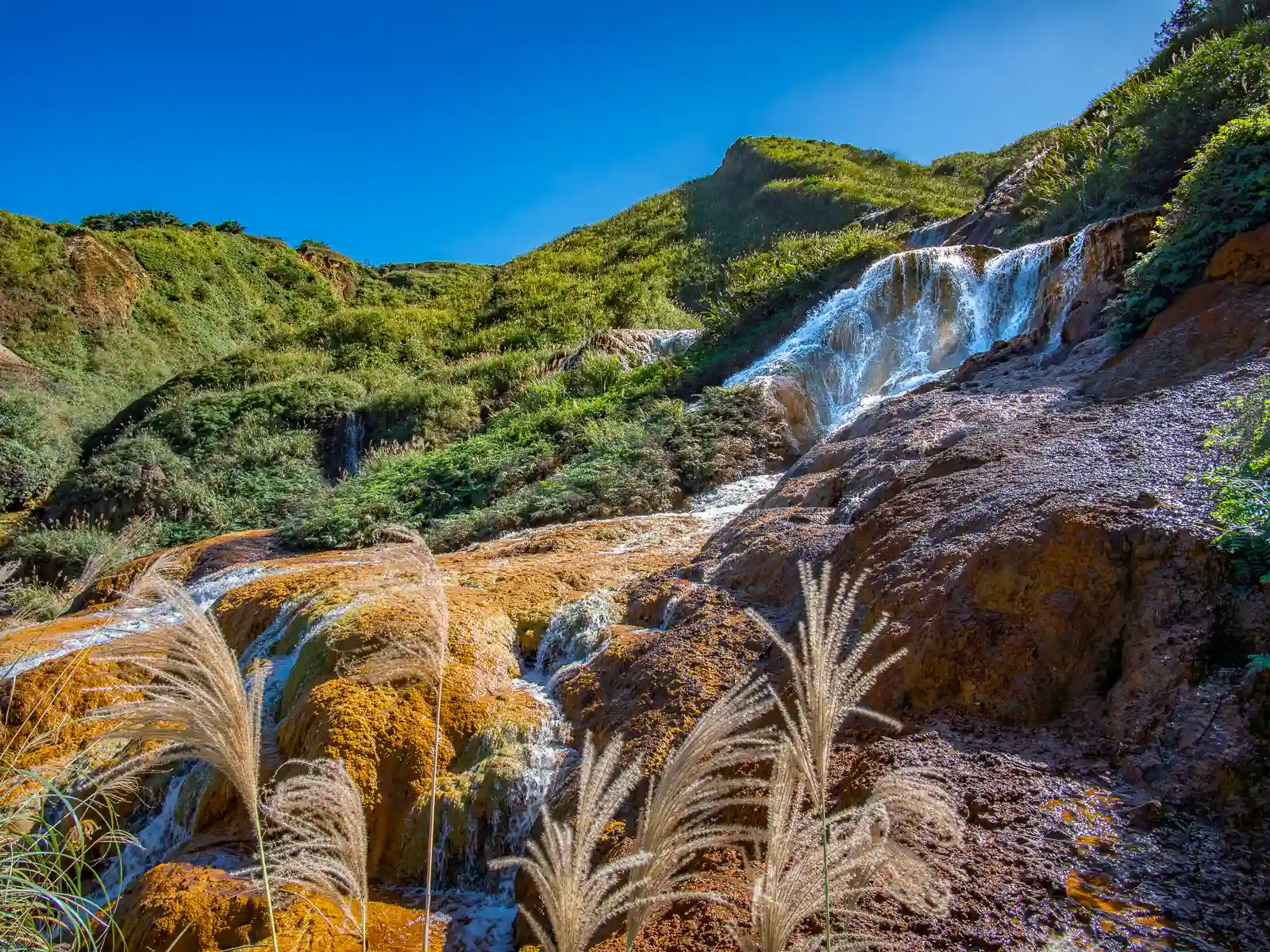
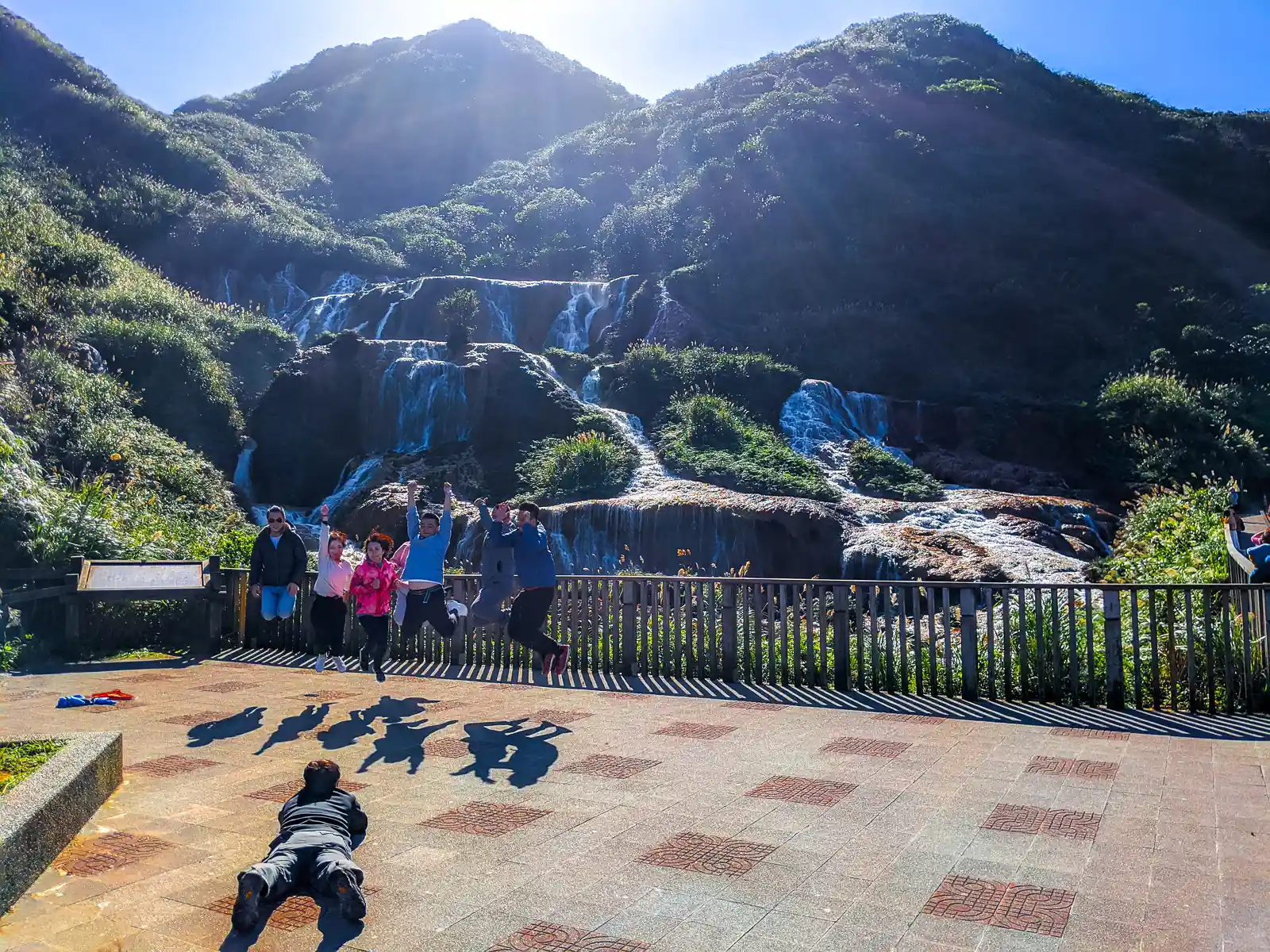
Located halfway down Jinguashi Mountain “behind” Jiufen, the Golden Waterfall is a unique cascade that appears to glow with a unique yellow color. This is due to the high mineral content of the water, which flows down from the mountain above and includes sulfur, arsenic and copper ore. Park at the Golden Waterfall Parking Lot, and cross the street to enjoy this serene and quiet waterfall. Also, make note of the towering cliffs of the eastern side of Keelung Mountain that rise up menacingly behind you!
Yinyang Sea
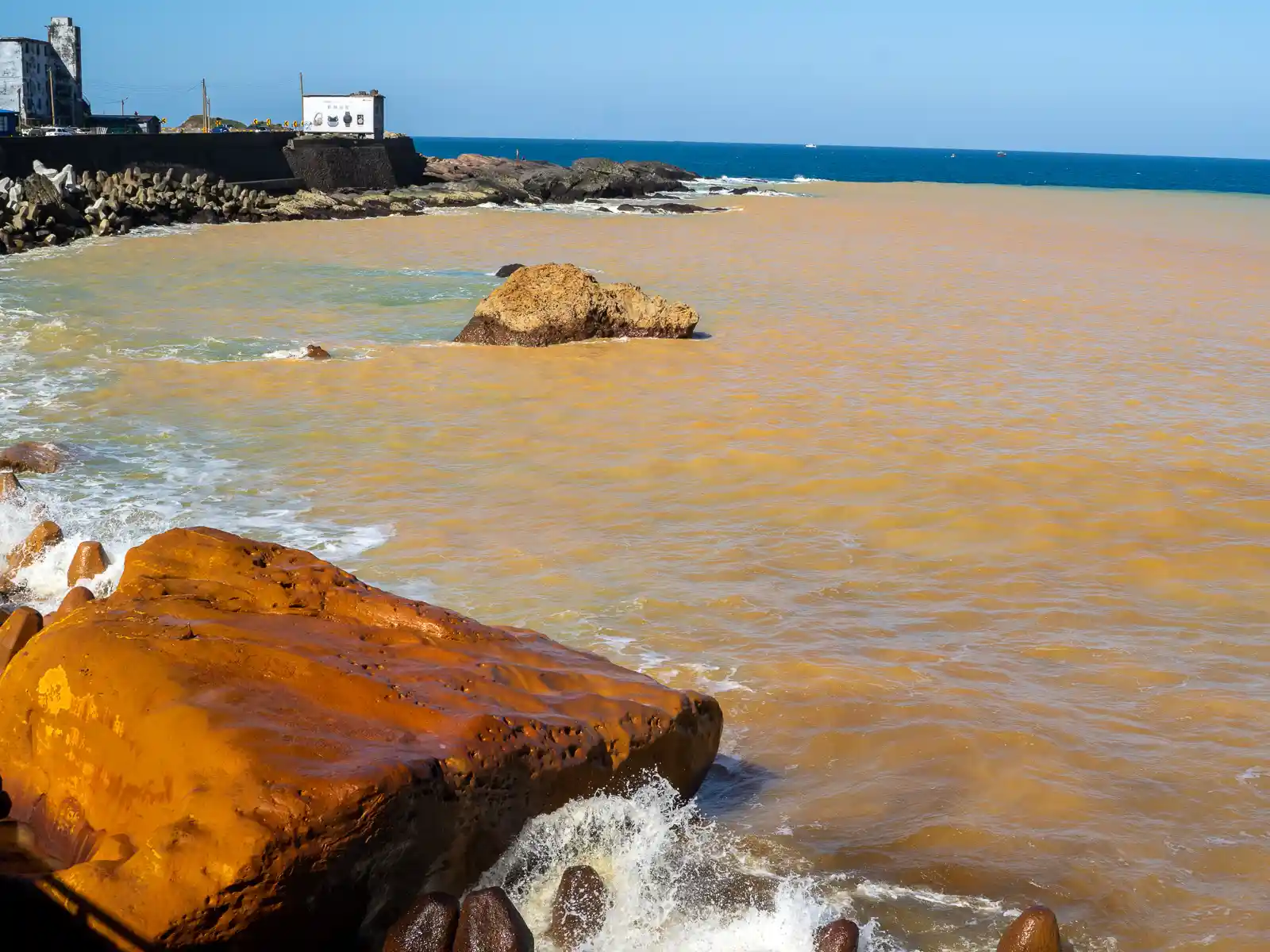
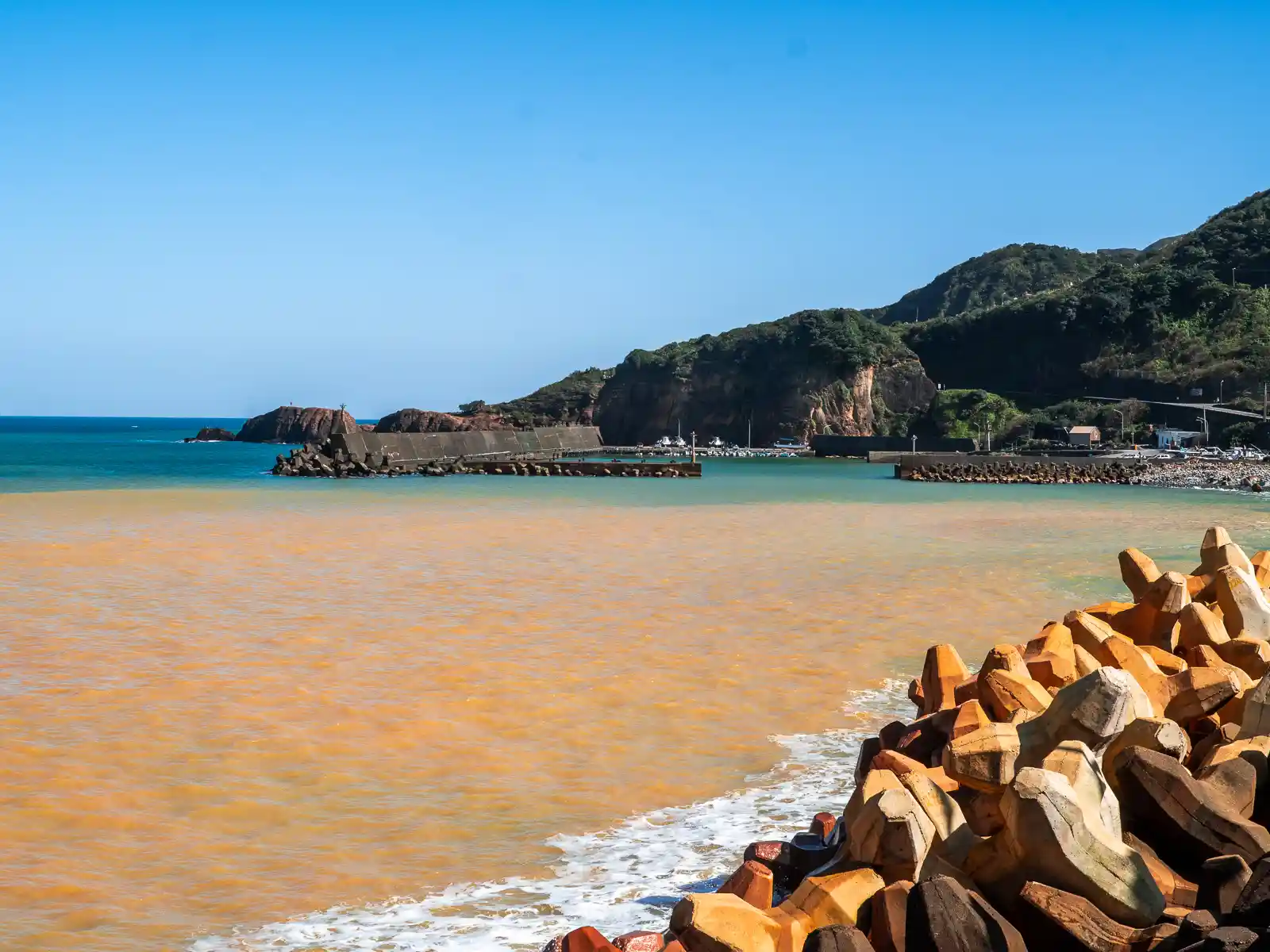
The juxtaposition of the yellowish-brown, mineral-rich water washed down from Jinguashi Mountain, against the clear blue ocean water of the Pacific creates a breathtaking contrast known as the Yinyang Sea. The stunning phenomenon of these contrasting colors is a result of the unique geological composition of Jinguashi Mountain. Constant weathering washes down copper and iron-rich soil into the sea below, which then binds with and suspends sediment in the ocean water, creating this picturesque phenomenon.
The Yinyang Sea is best viewed from the special viewing platform at the bottom of the road leading down from the Golden Waterfall.
New Taipei City Government Gold Museum
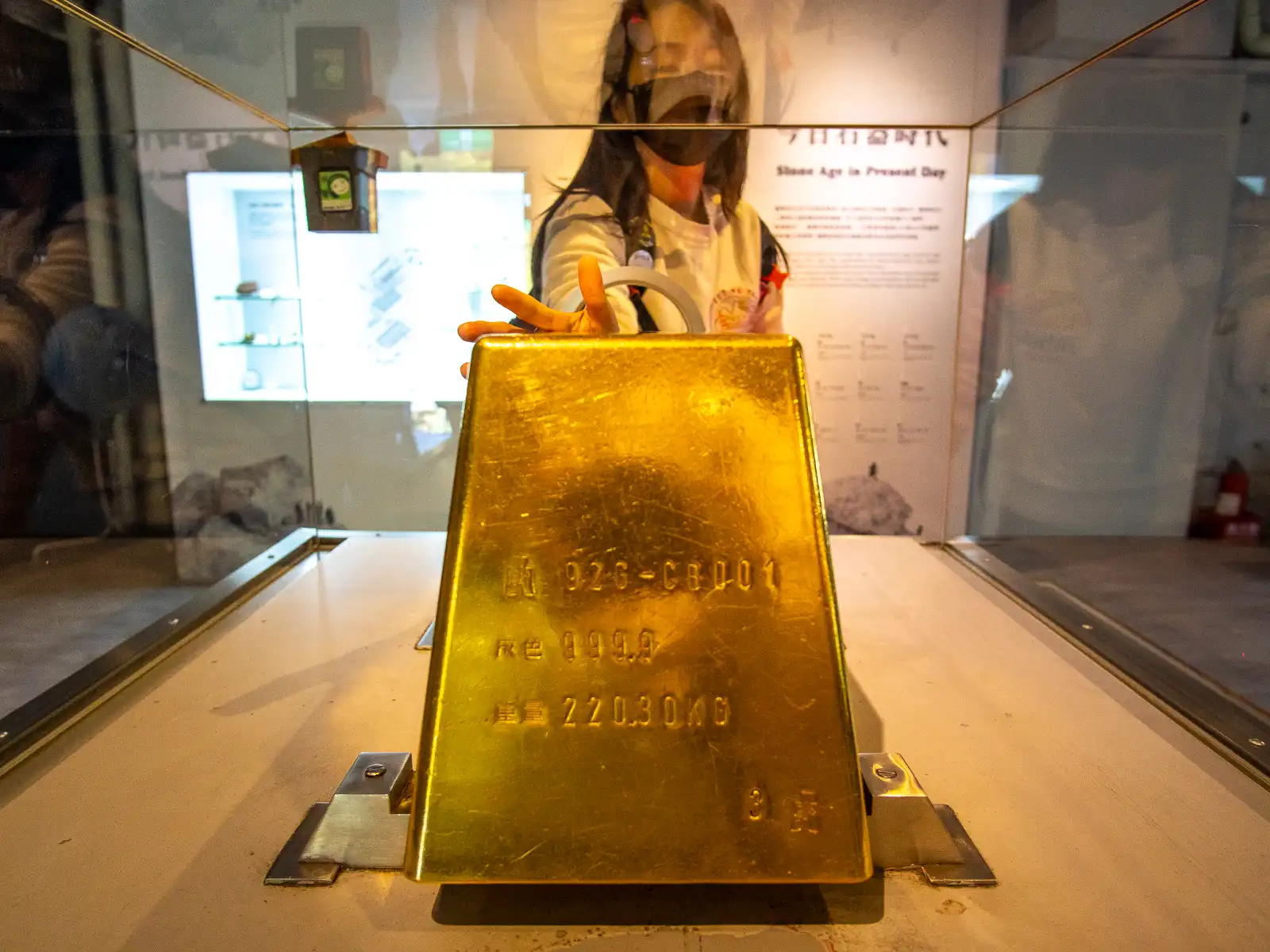
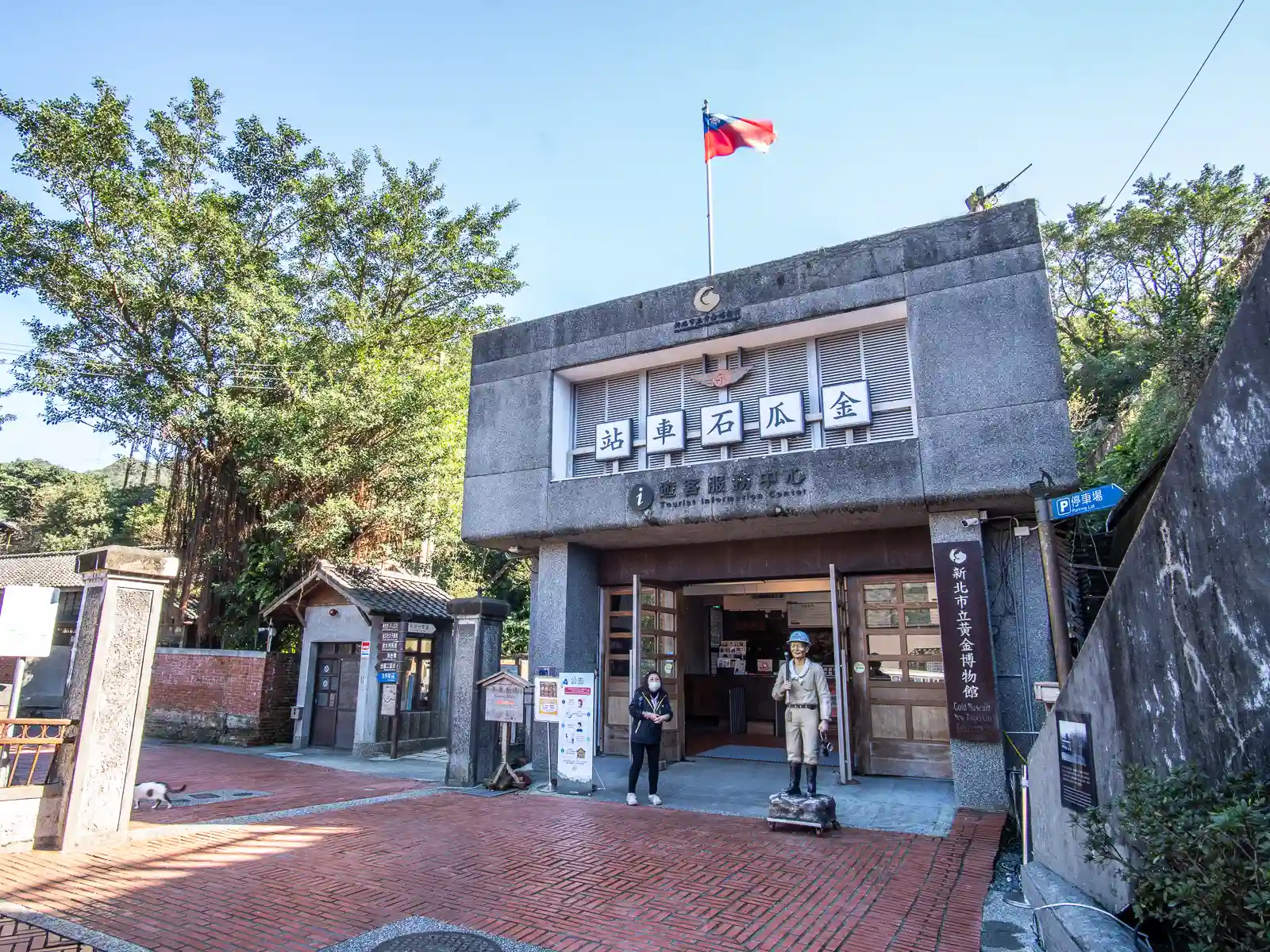
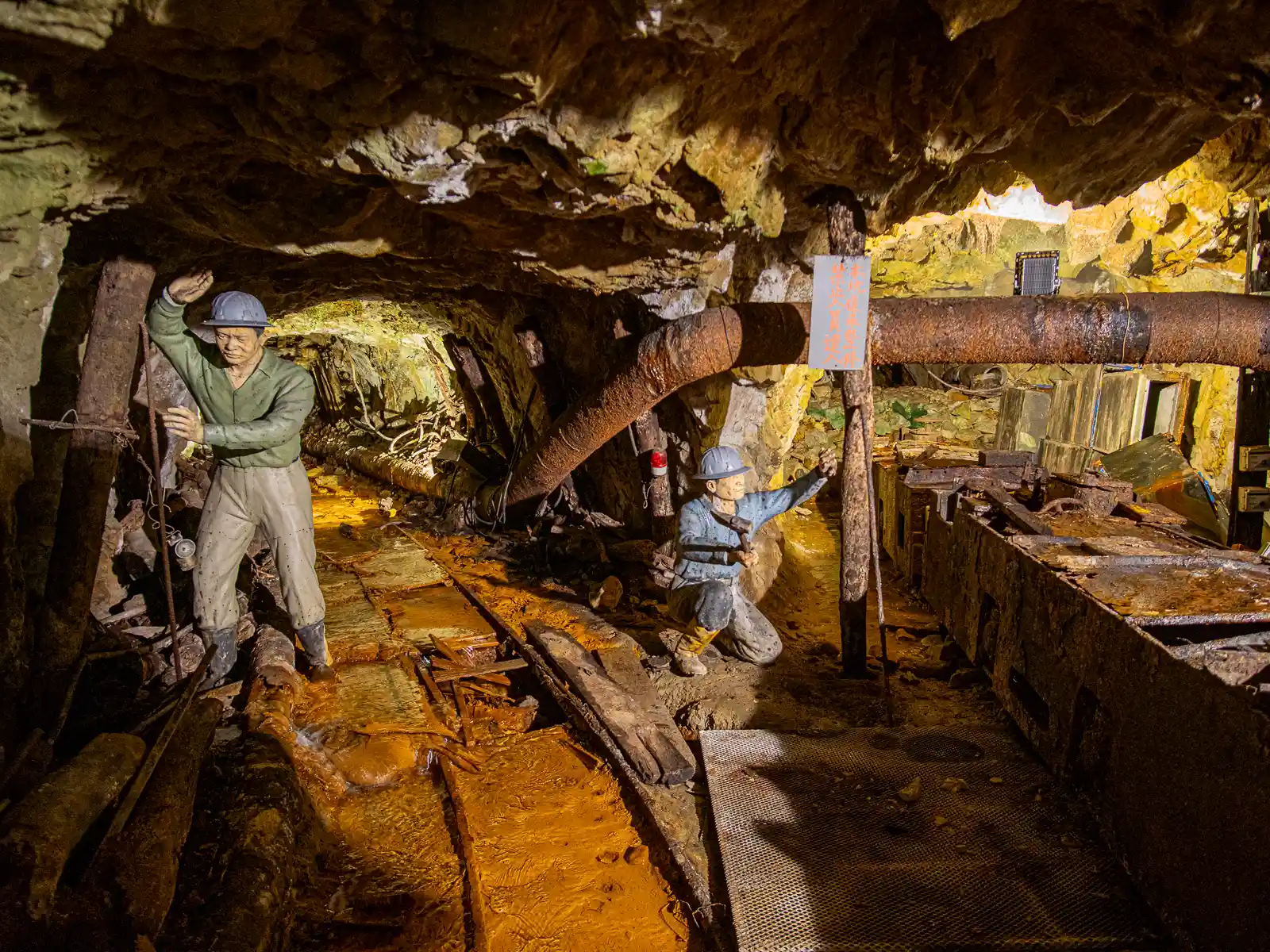
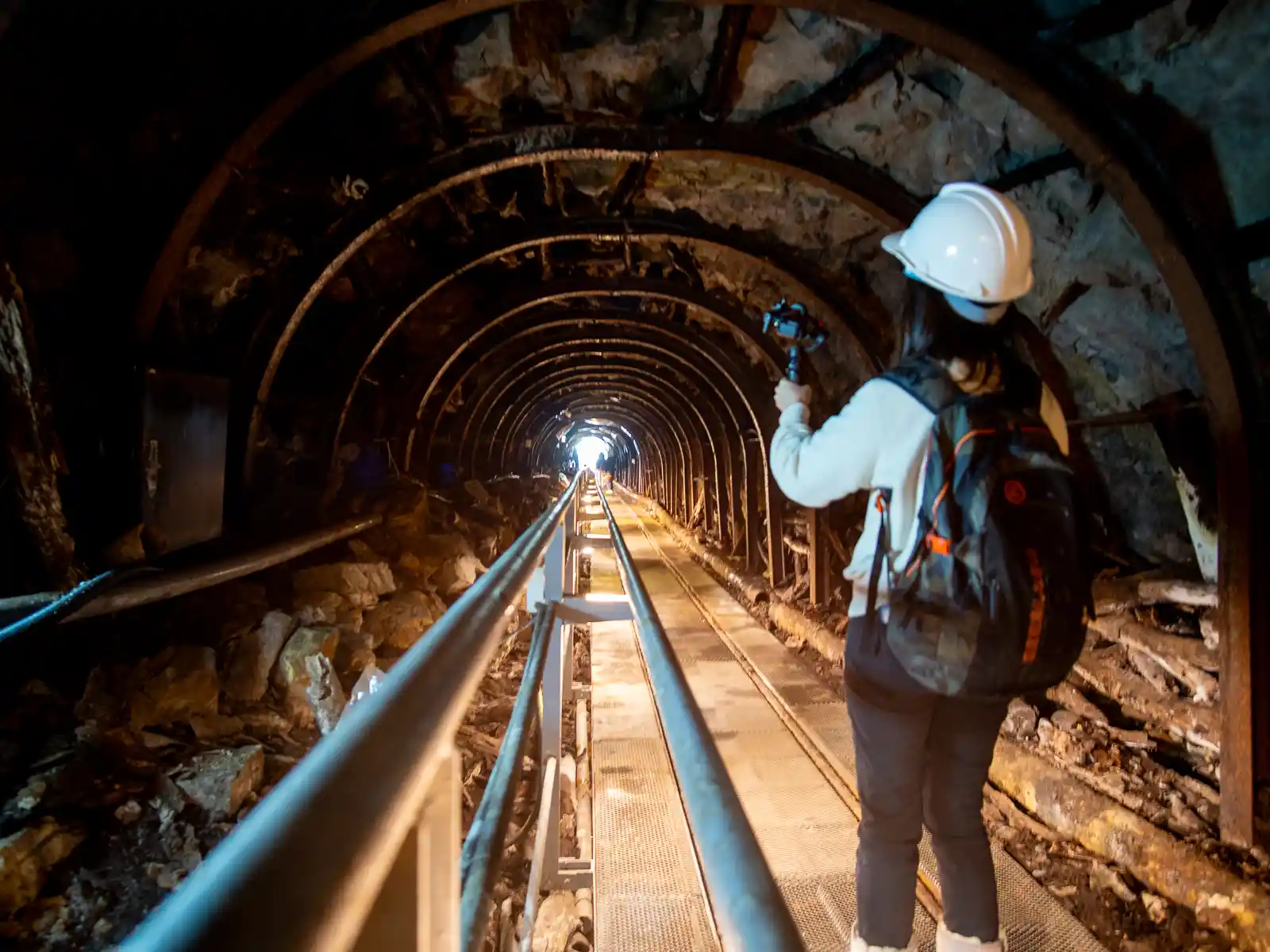
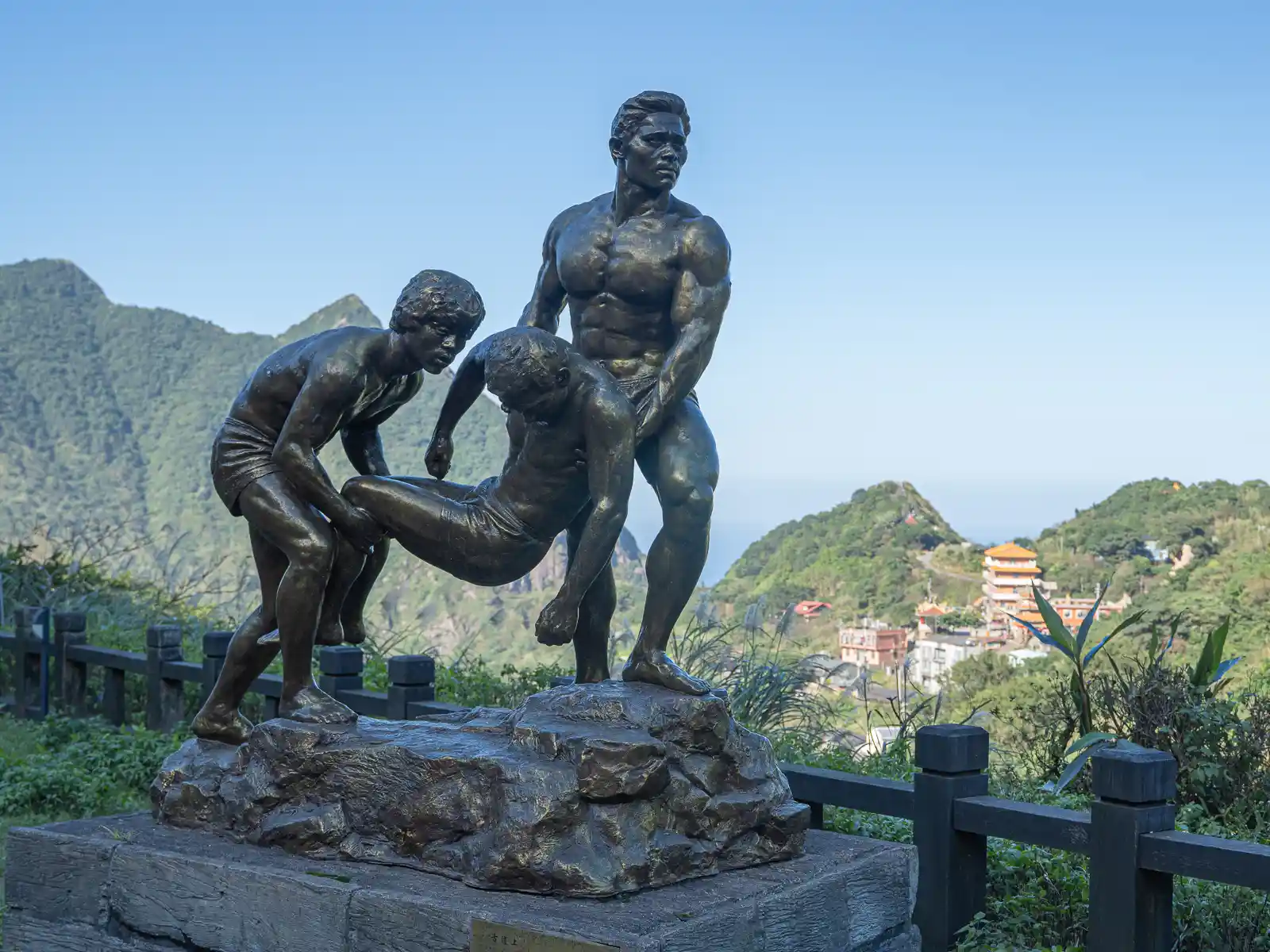
The New Taipei City Government Gold Museum mixes education, cultural heritage, and modern design. One of the museum’s highlights is the Benshan No. 5 Tunnel experience, which leads visitors down a real gold mining tunnel to get a sense of how the mine operated back in the day.
The Gold Museum is also home to several historic Japanese era residences and dormitories, including the Crown Prince Chalet, a rare example of a formal wooden Japanese building with an attached garden and archery field.
Other buildings feature displays of mining-era equipment, various metal crafts, and traditional gold ornaments. Finally, don’t miss the giant 485-pound gold brick in the Metal Art Building, which visitors are allowed to touch!
Teapot Mountain Trail & Baoshi Mountain Lookout
The Teapot Mountain Trail is a moderate-difficulty, half-day hike that offers panoramic views, relaxing gazebos and an exciting finish. Entrances are located behind the New Taipei City Government Gold Museum and at the nearby Quanji Temple Parking Lot.
Starting from the Gold Museum, the trail begins with several sets of steep stairs as it quickly ascends the mountainside behind Jinguashi. Setting out from the Quanji Temple Parking Lot, on the other hand, offers a slightly more gradual ascent. Regardless of which entrance you choose, the two paths converge at the Chaobao Pavilion.
During this initial section, enjoy occasional views of the cone-shaped Keelung Mountain behind you and the Yinyang Sea below. Numerous pavilions along the way provide relaxing spots to rest.
The adventure truly begins once the hike reaches the spine of Teapot Mountain. The subsequent section involves scrambling up the ridgeline with the assistance of fixed ropes, navigating precipices, and even passing through a small cave! This route has been described as both “scary” and “challenging”, but once at the top, it offers one of the most rewarding views in all of Ruifang and the North Coast!
Insider’s Tip – Baoshi Mountain Trail: If you’re looking for 360-degree views without the physical challenges of the Teapot Mountain Trail, consider the adjacent Baoshi Mountain Trail—known as the shortest trail in Taiwan offering panoramic ocean views. The trail entrance can be accessed from the Quanji Temple Parking Lot. Follow the walkway for a short 160 meters to reach the Baoshi Mountain Lookout, a circular viewing platform, which boasts views that rival those from Teapot Mountain above.
For weather forecasts and additional information, visit the New Taipei Travel website.
Houtong Cat Village
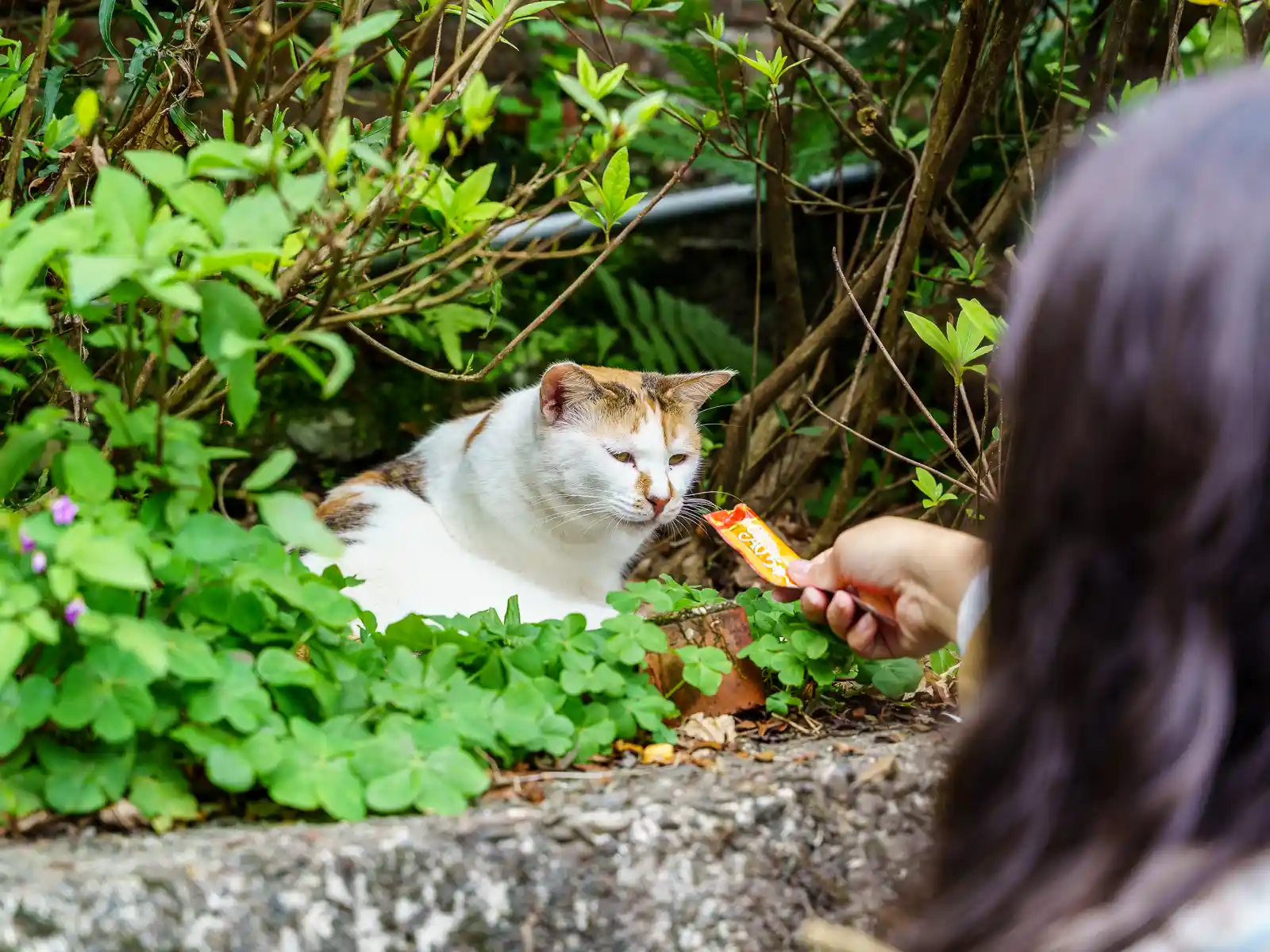
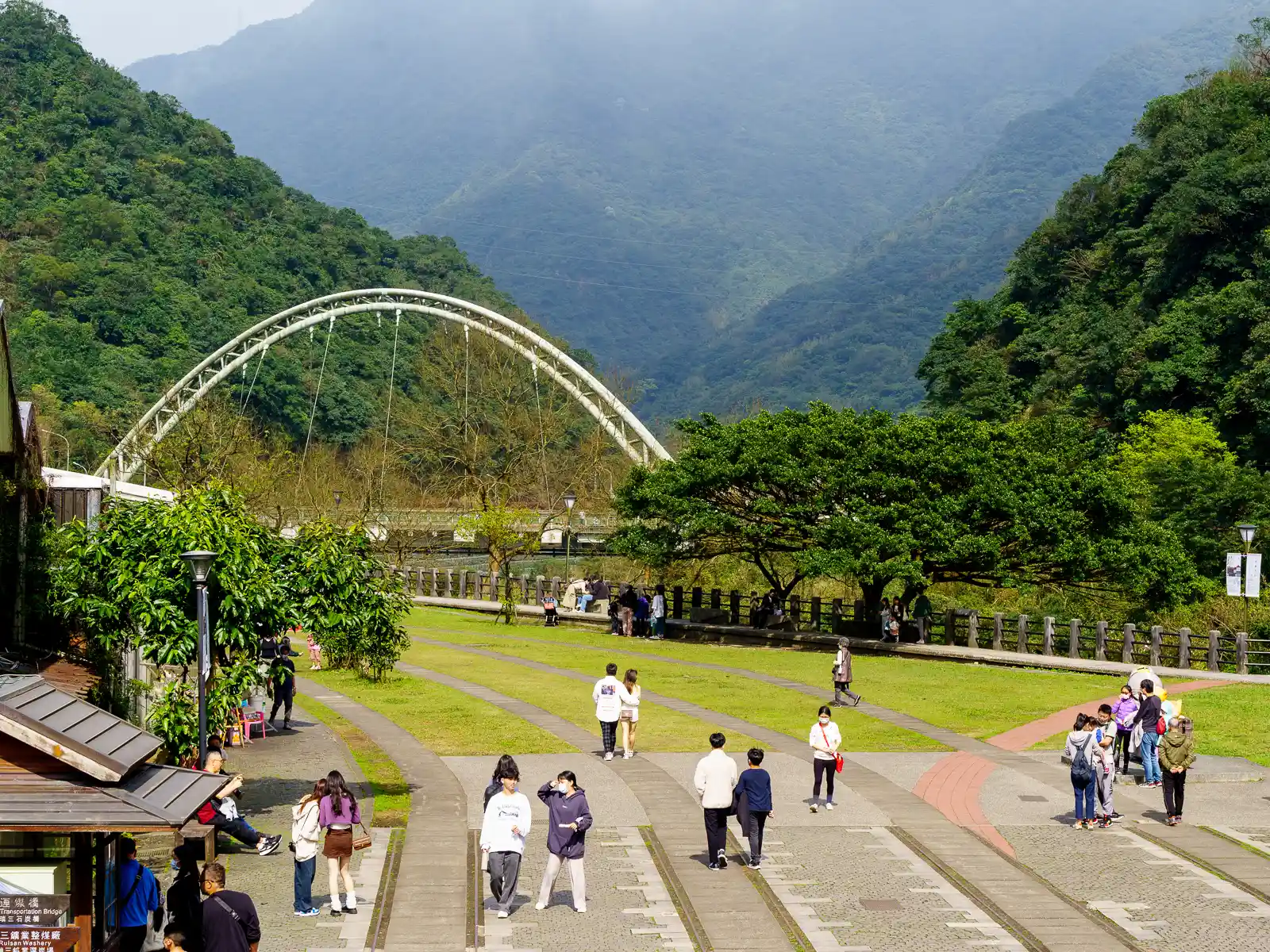
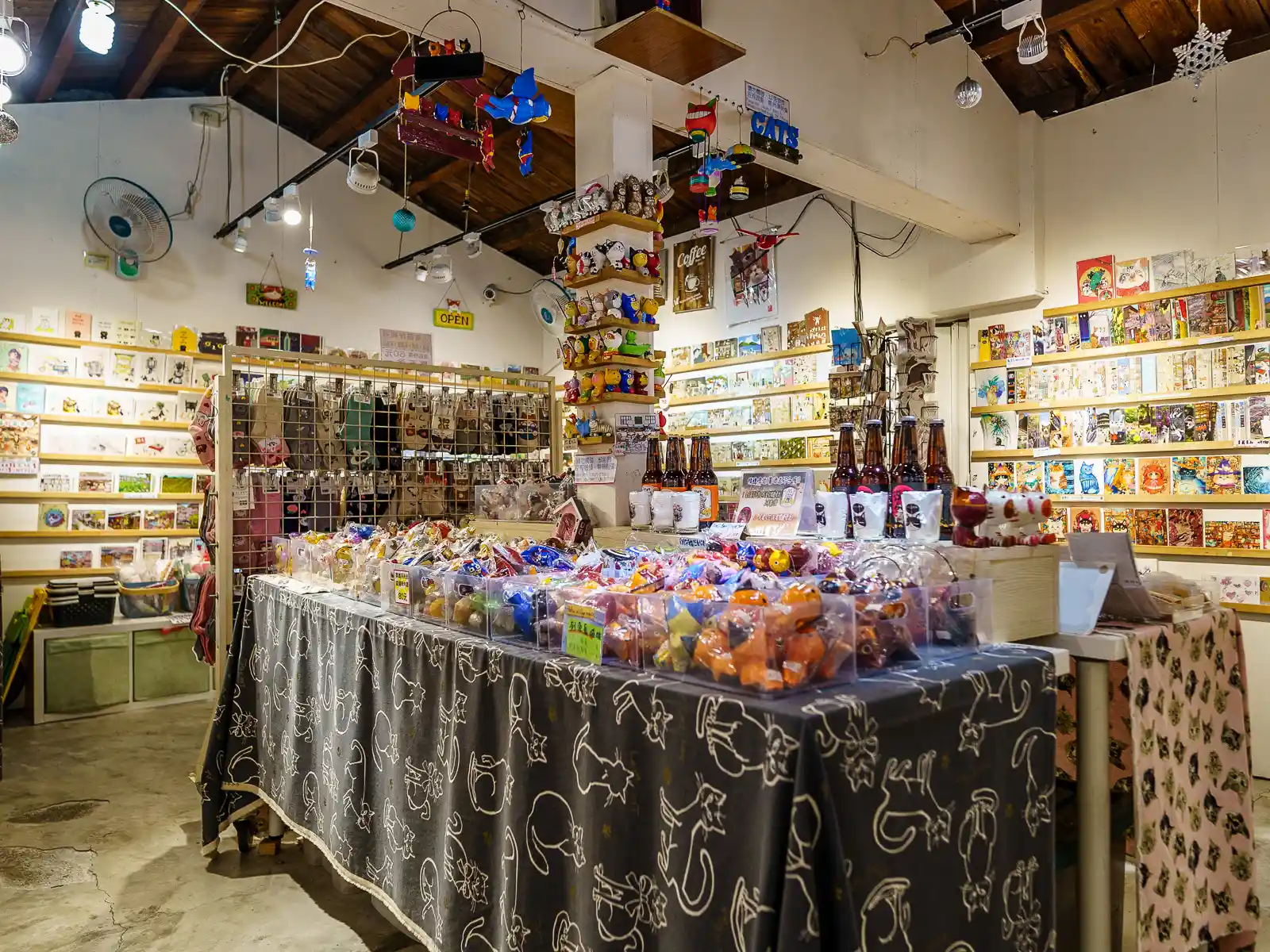
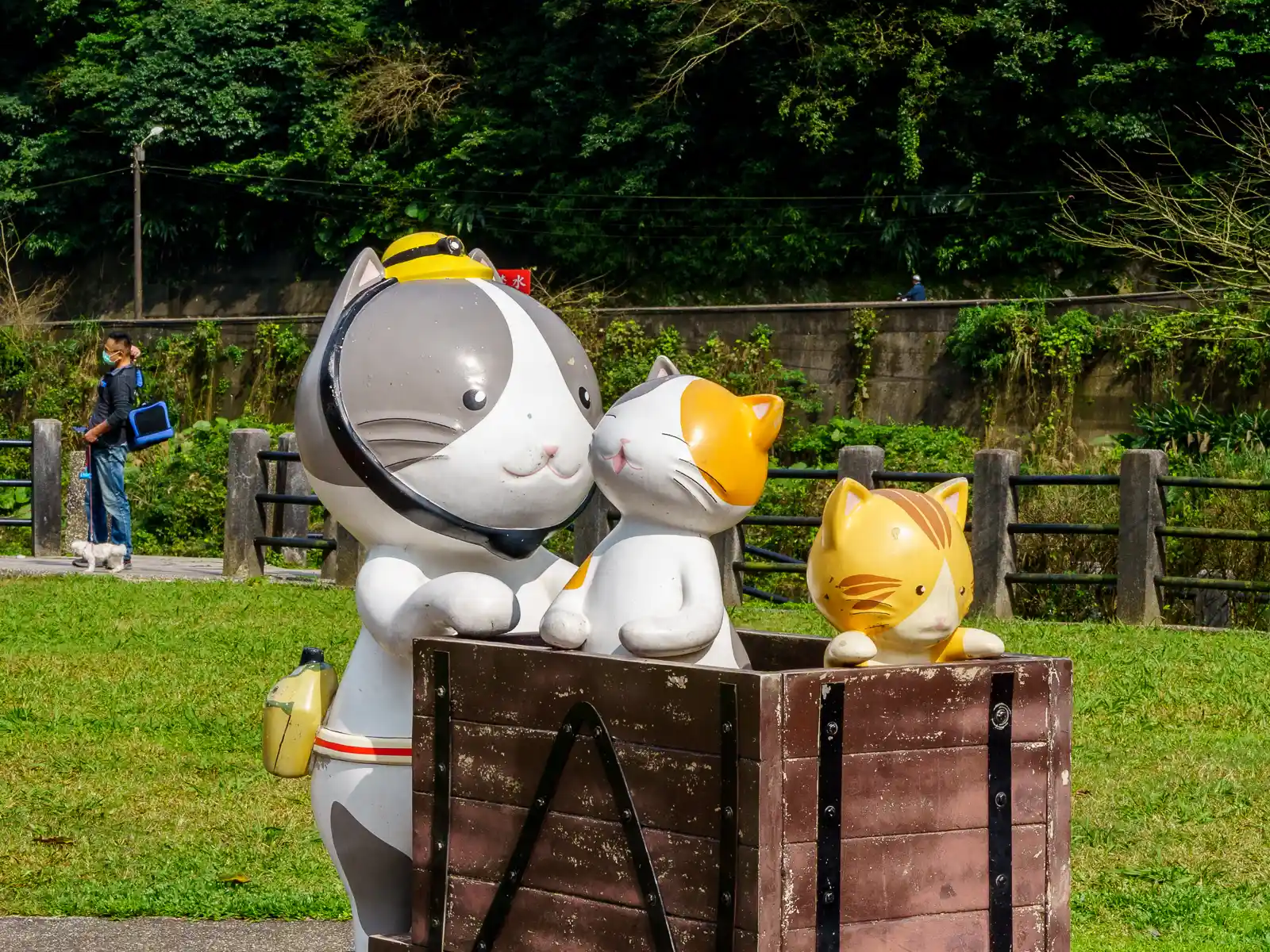
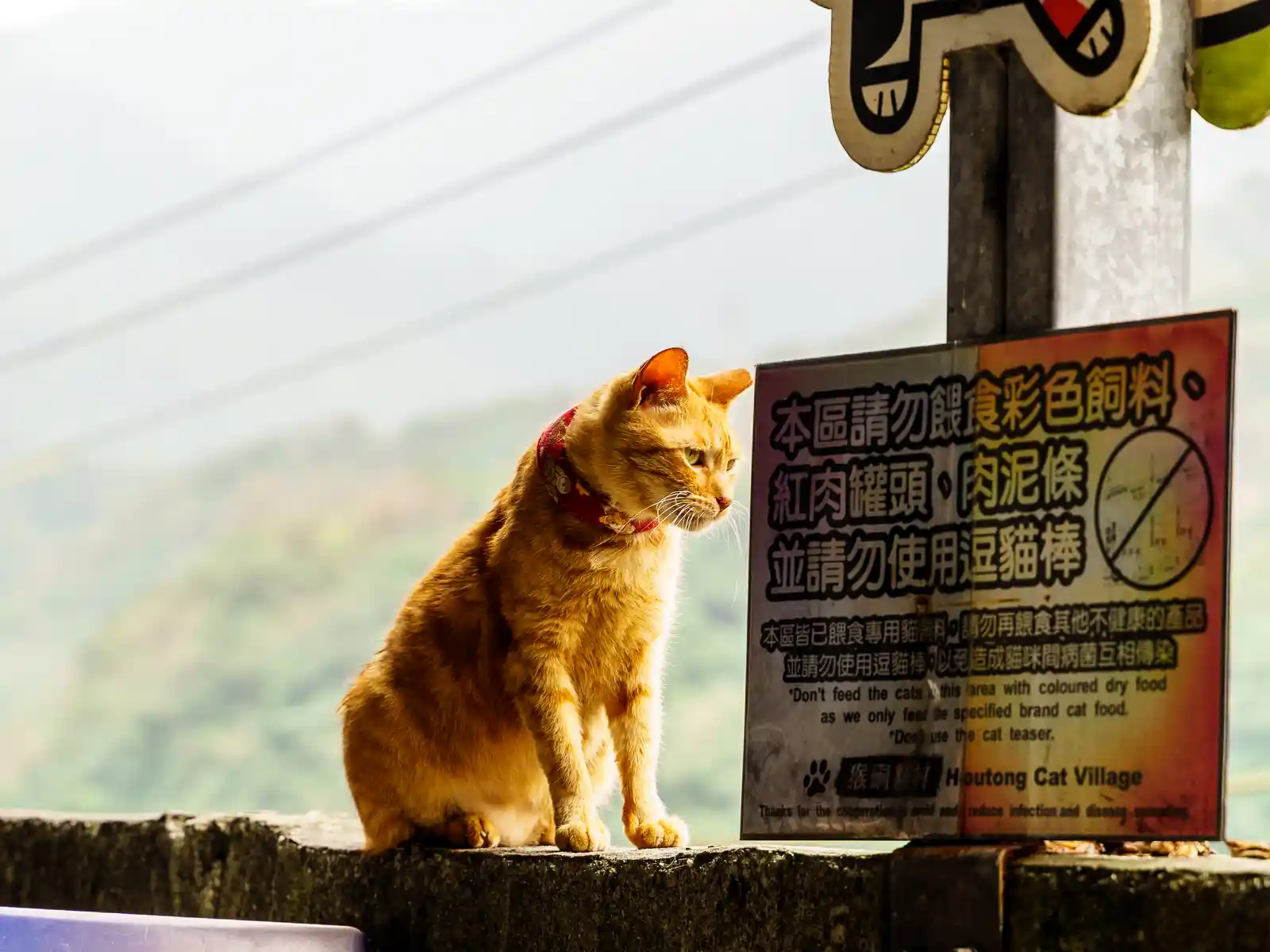
Located below Jiufen in the Pingxi River Valley, the town of Houtong (now better known as “Houtong Cat Village”) was once a prosperous mining town that was famous for being the center of Taiwan’s coal production. After coal mining declined in the 1990s, the town was dormant until the late 2000s, when local residents started caring for the town’s large population of stray cats.
Since then, due in part to the power of social media, the town has become famous for its lovable (and well-cared for) cat population. Houtong is now filled with cafes and souvenir shops which are testament to the transformative power of these previously abandoned cats.
In addition to being a village of cats, the town’s Railway Cultural Park pays tribute to its mining heritage. Here visitors can view old mining equipment, historical artifacts, and learn about the town’s history.
Shenkeng Old Street
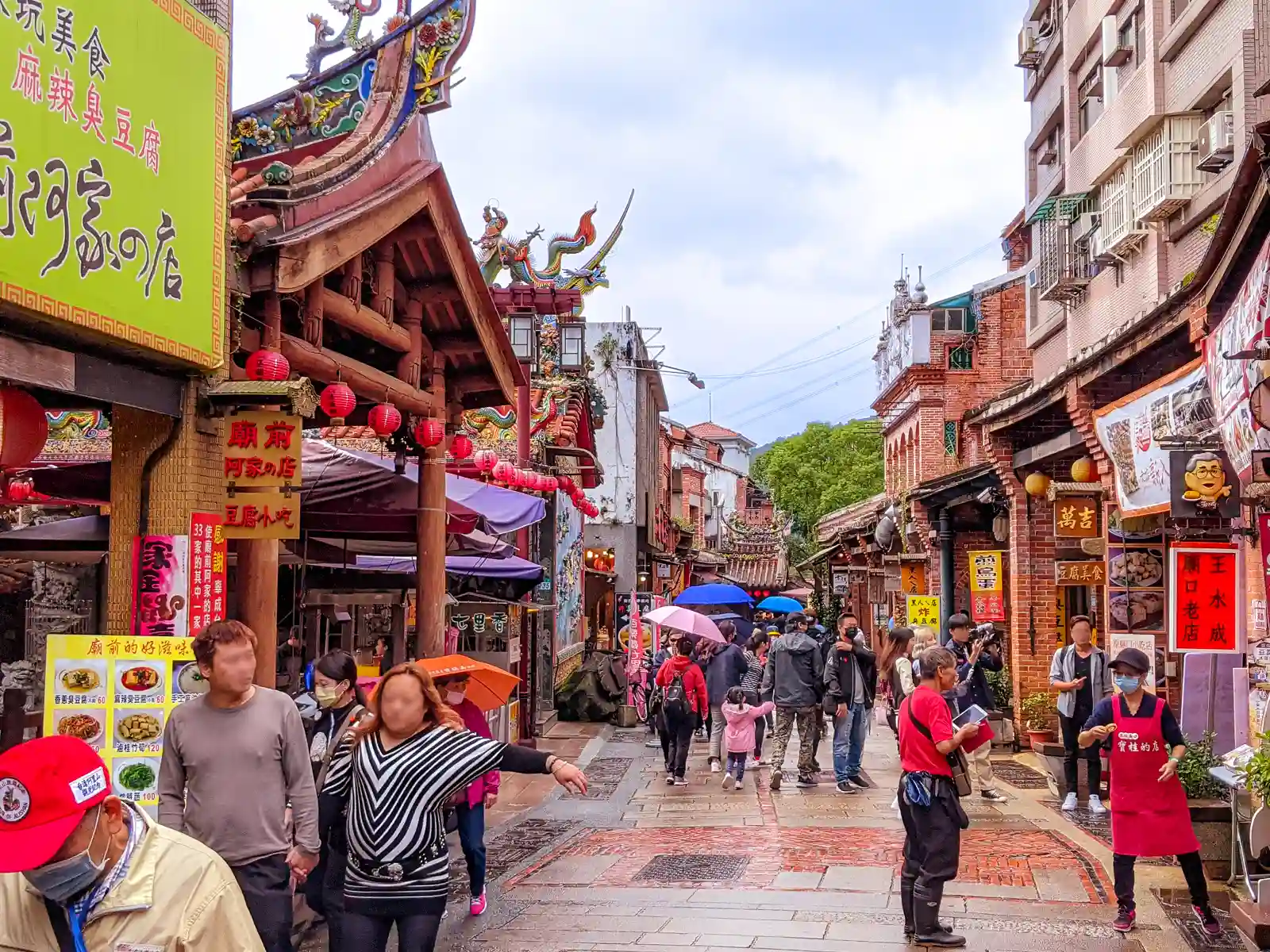
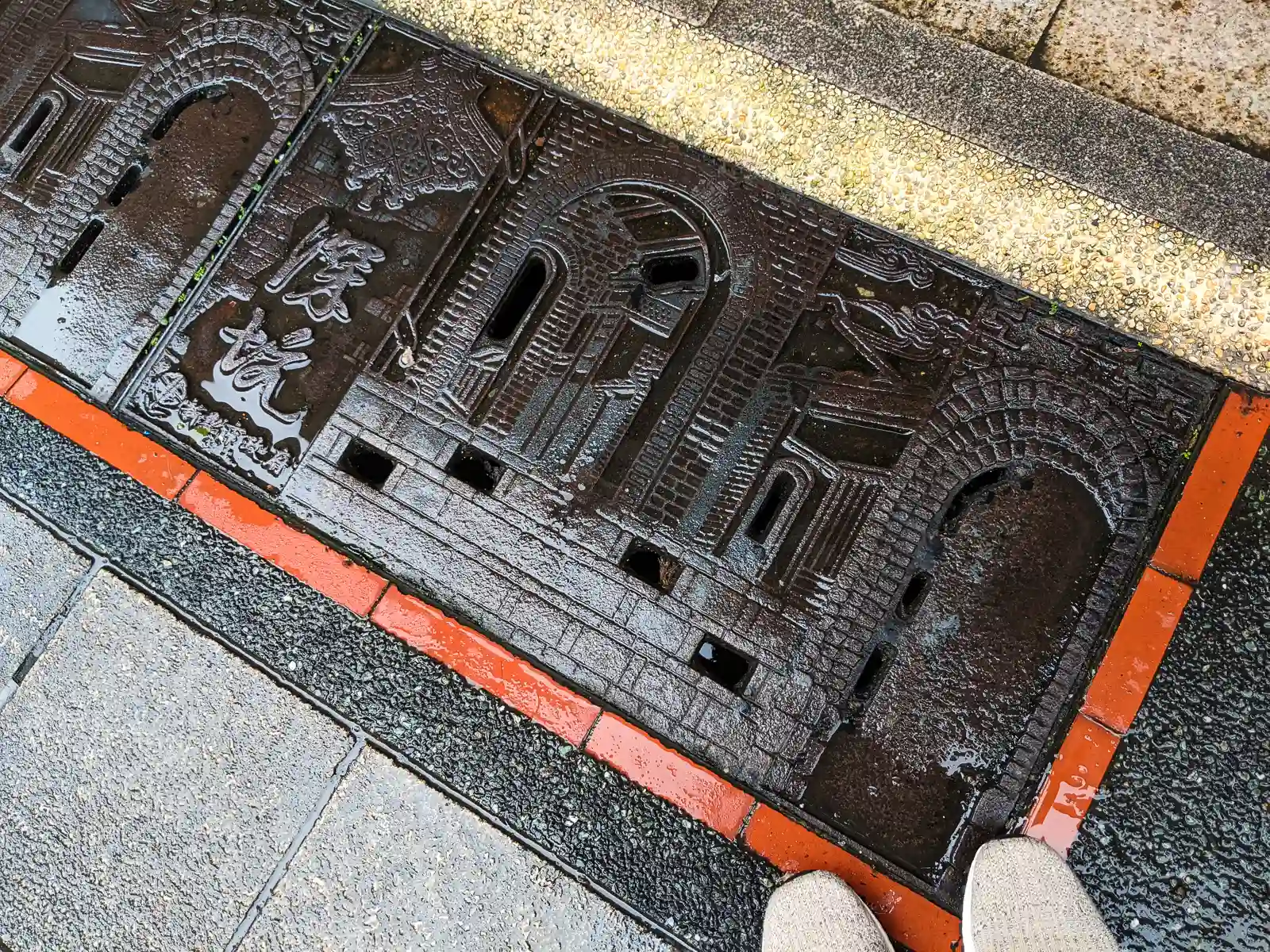
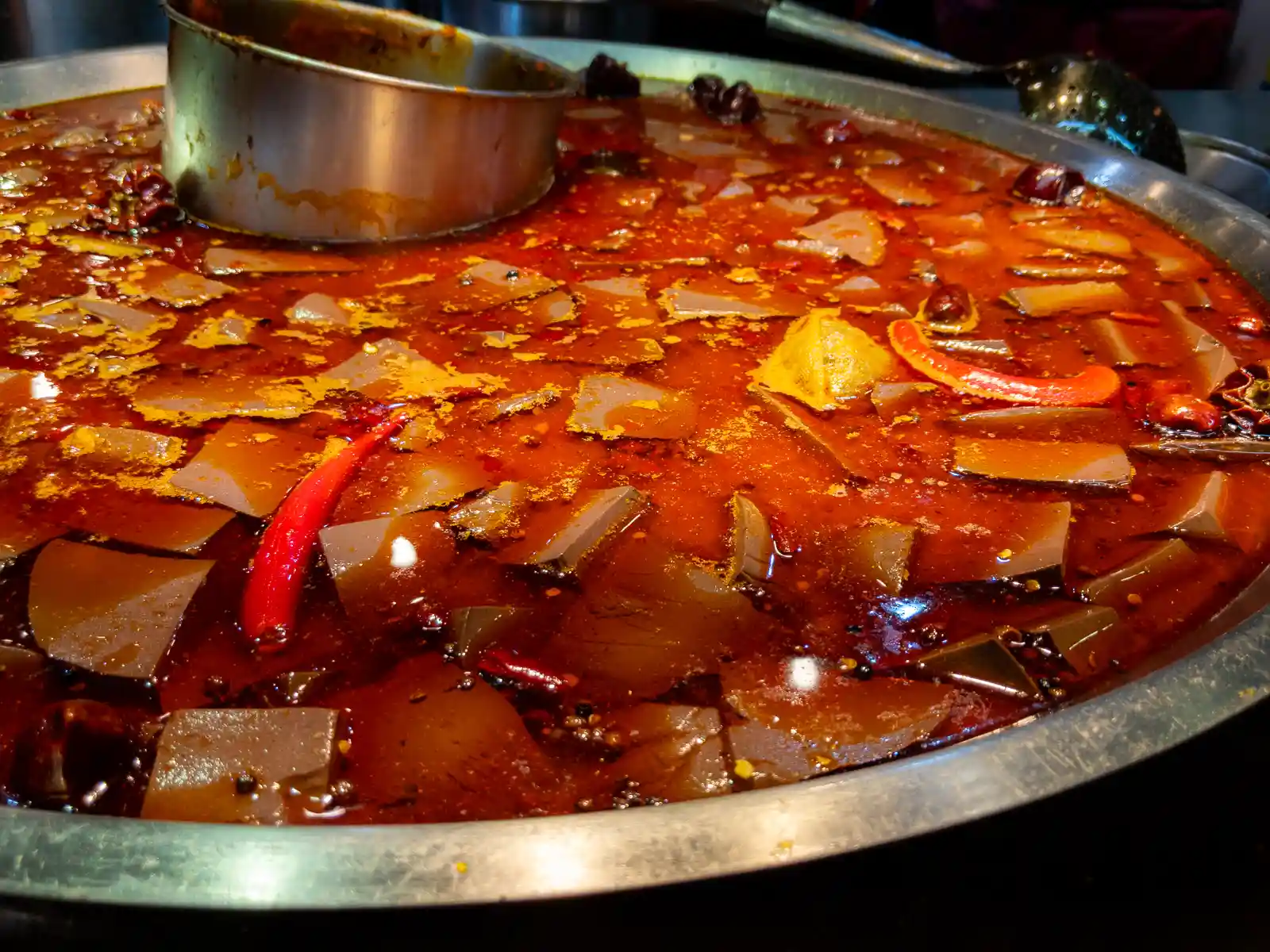
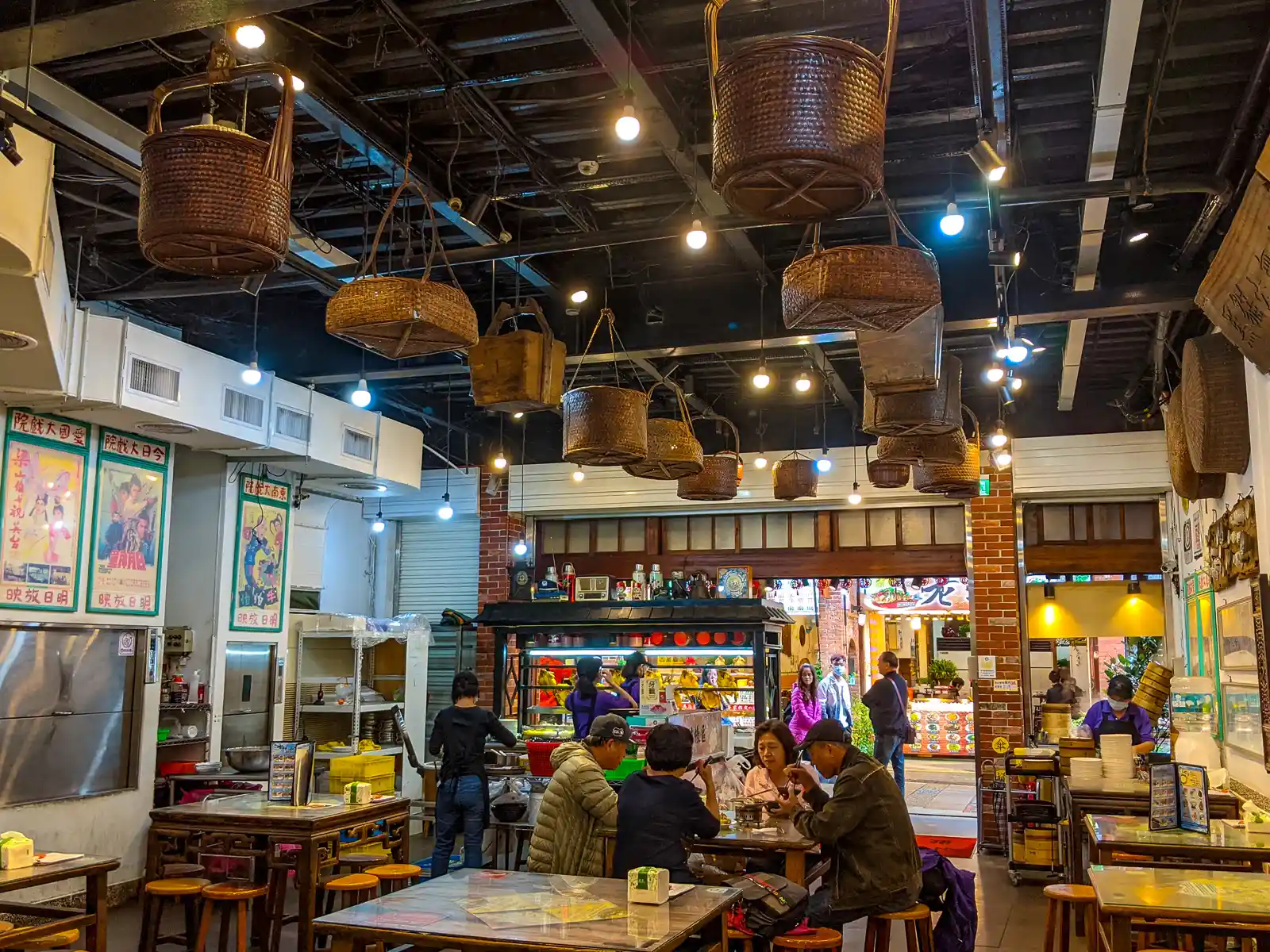
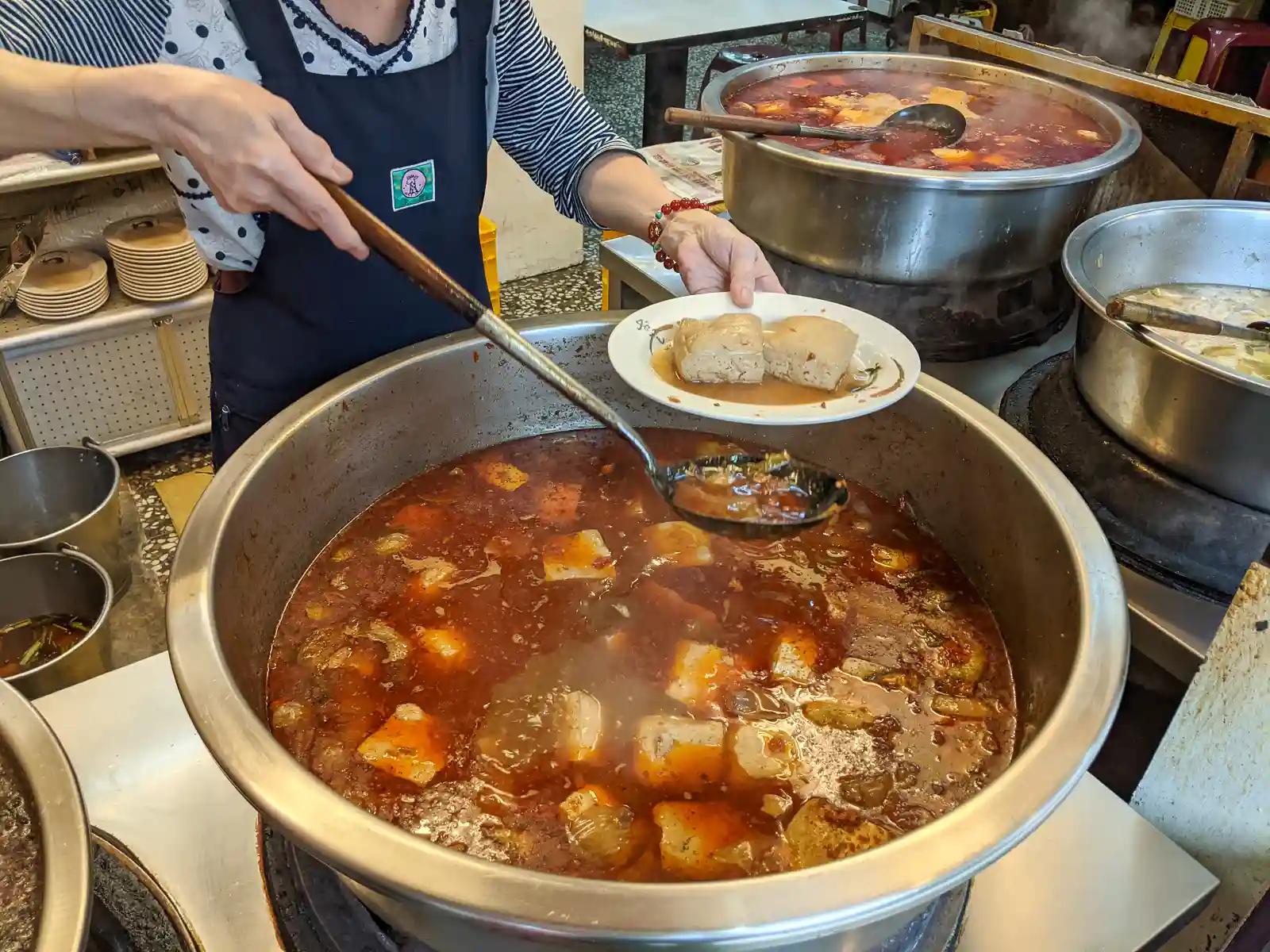
The small village of Shenkeng lies on the eastern outskirts of Taipei. Famous for its tofu, the village, and in particular, Shenkeng Old Street, is lined with stalls selling all sorts of dishes made with local tofu.
Shenkeng’s tofu dishes stray far beyond the conservative veggie meat substitutes known in the West and include stinky tofu (fried, steamed, and boiled), as well as tofu cake, tofu ice cream, and even tofu pudding.
The quality of the local tofu was officially recognized by former president Chiang Ching-Kuo when he visited to dine, and three dishes that are still served around town were later presented at the 2019 state banquet (tofu and fish with soybean sauce, braised tofu, and duck’s blood stinky tofu).
Shifen Old Street
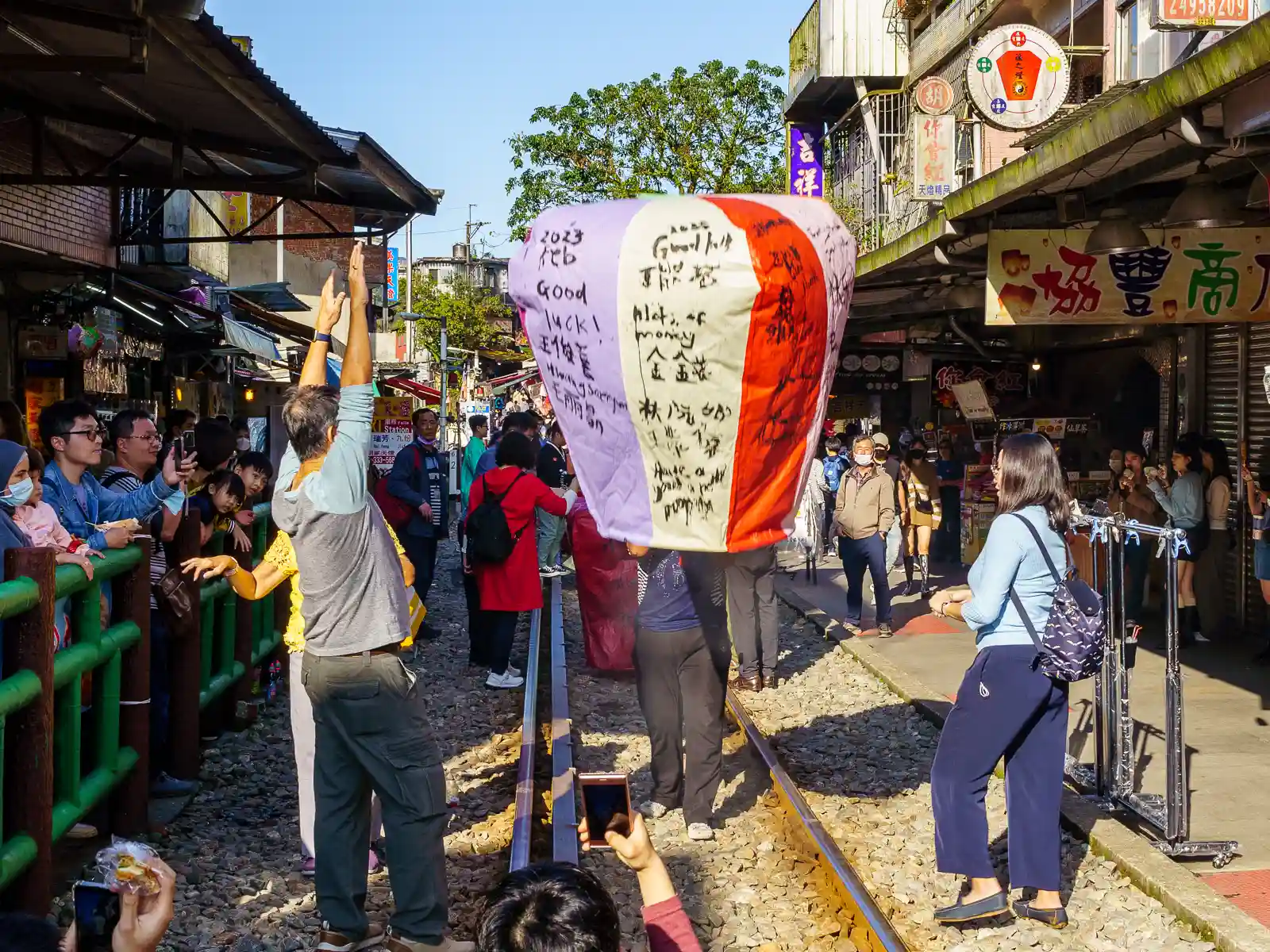
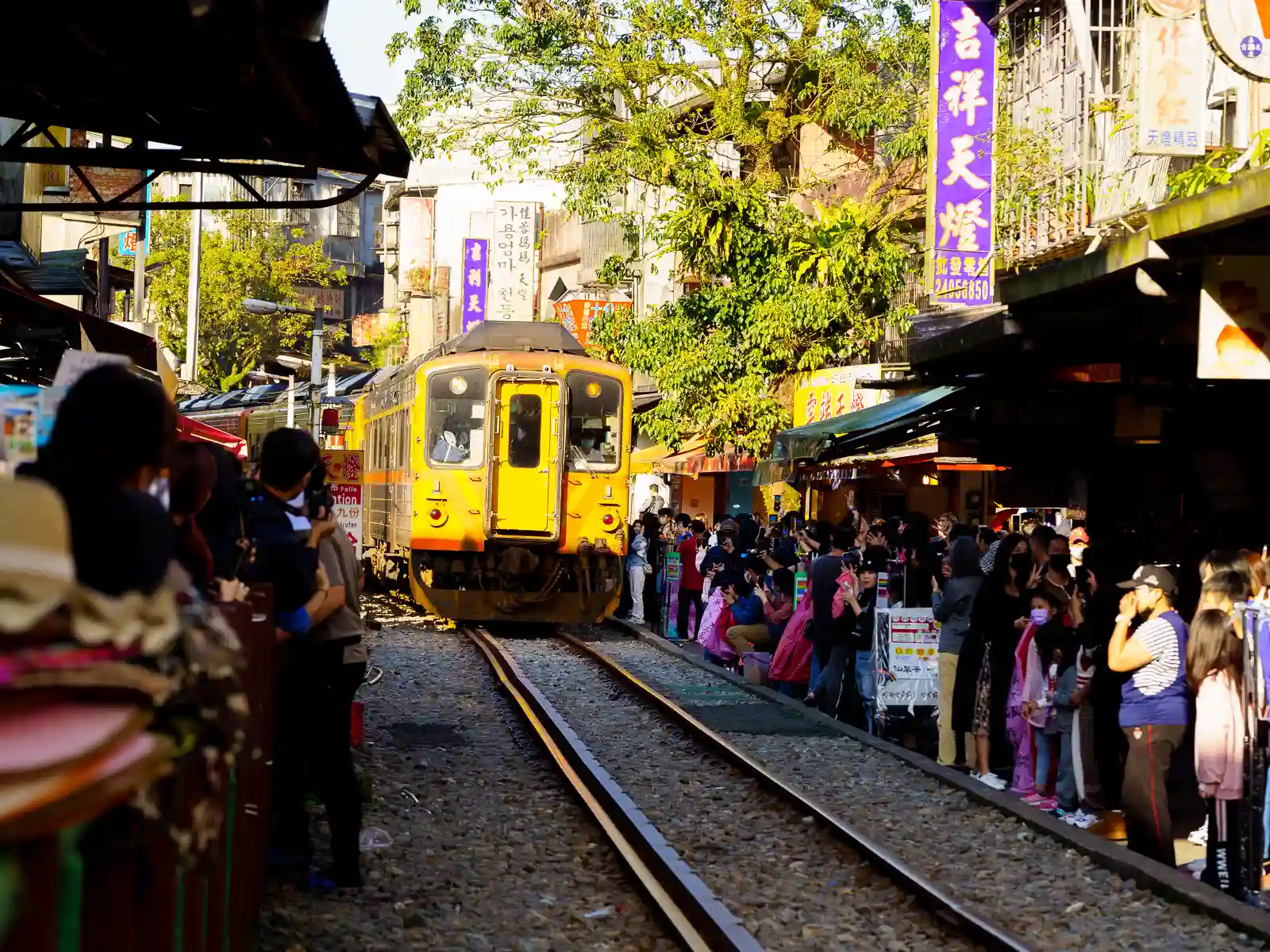
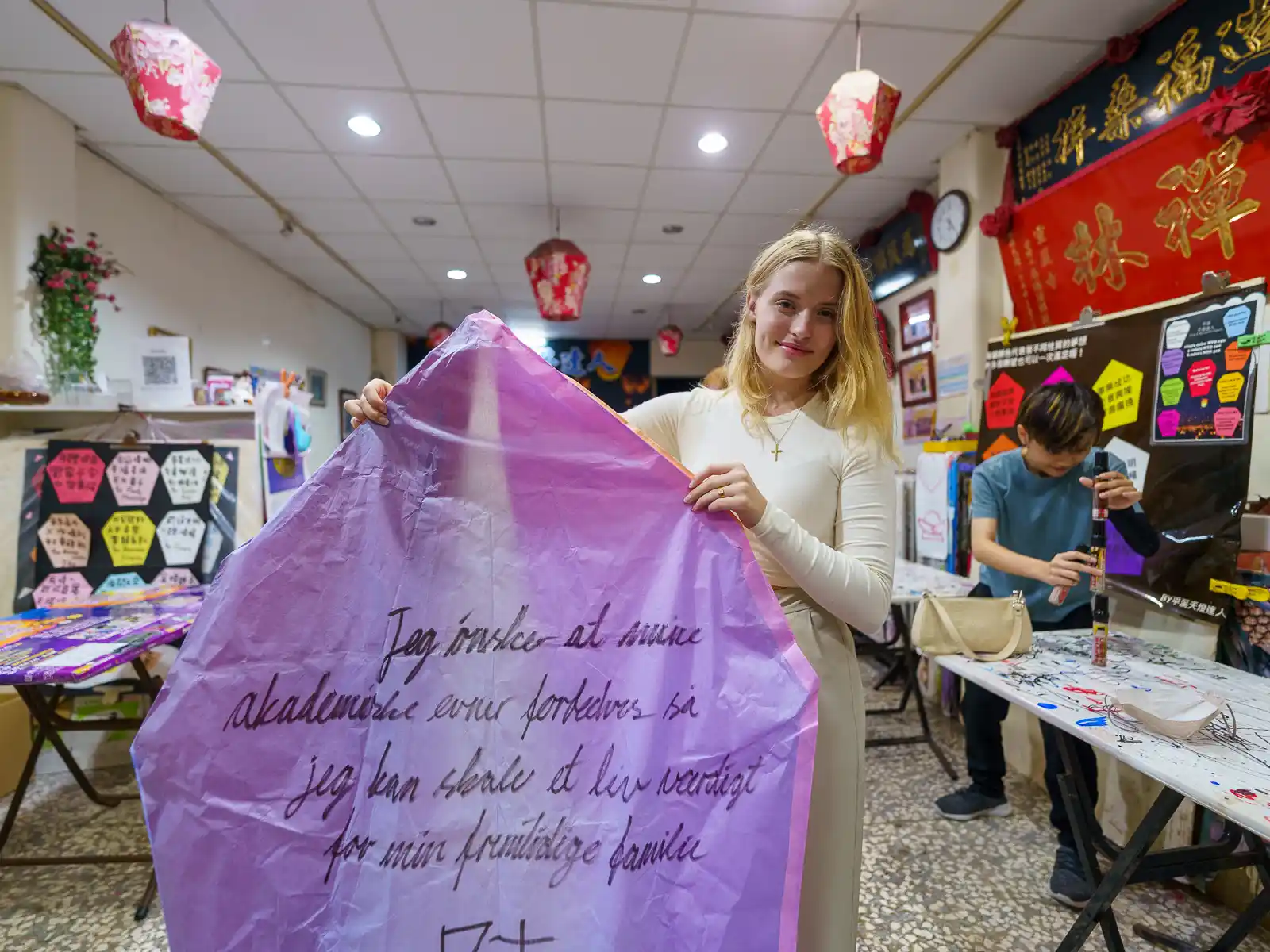
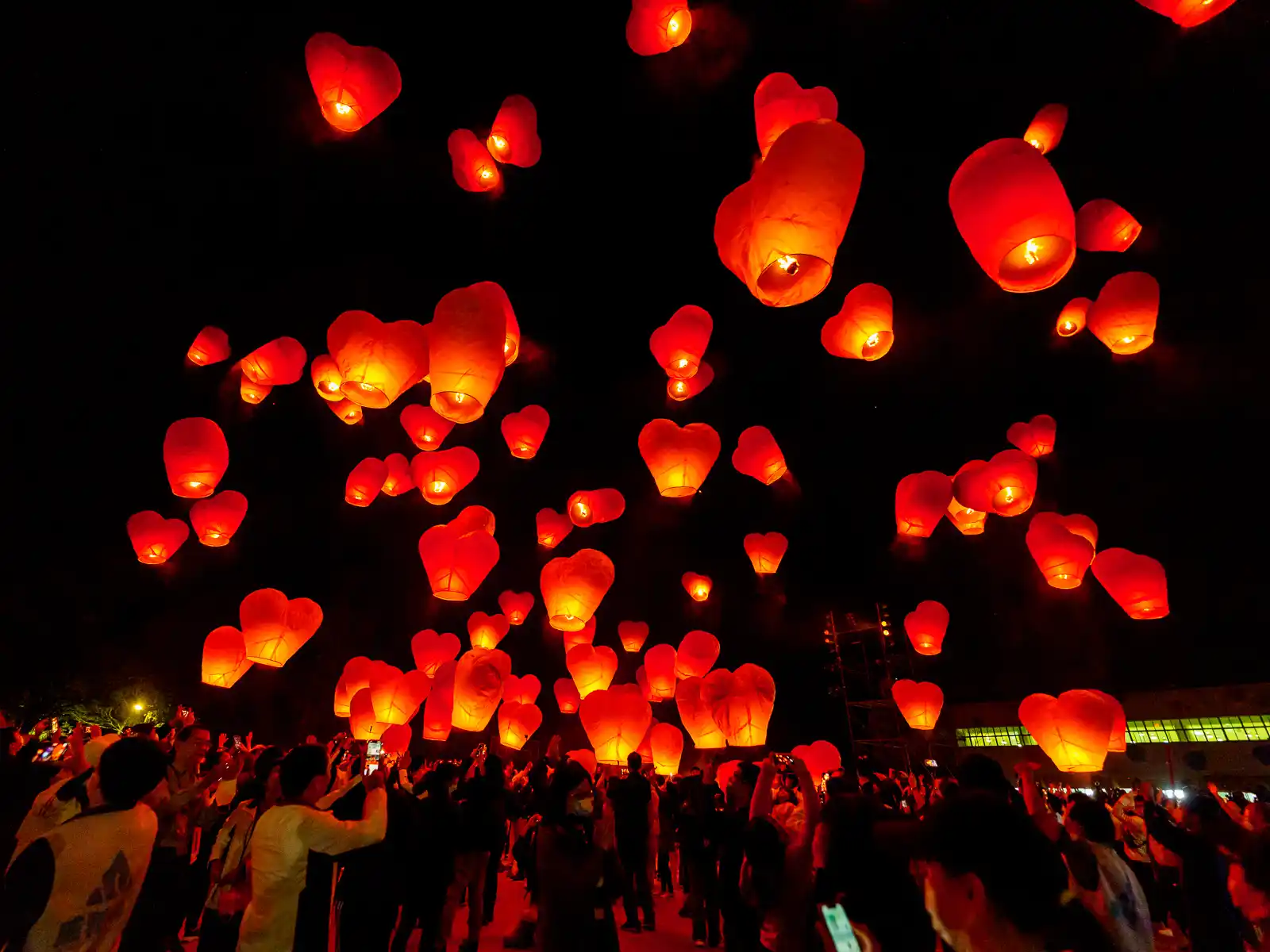
Shifen, another lively town on the Pingxi Rail Line, is known for its sky lanterns, rural scenery, and coal-mining history. The town is famous for its picturesque waterfall, Shifen Waterfall, which is said to be one of the most beautiful cascades in Taiwan, and for its unique tradition of launching sky lanterns.
Originally used as a signaling system by the town’s residents, the launching of sky lanterns has since evolved into local tradition. There’s even a special festival, the Pingxi Lantern Festival, held just after Lunar New Year that celebrates this tradition.
Similar to the train street in Hanoi, Shifen Old Street’s buildings are also built adjacent to the railroad tracks that cut through town and it’s possible to freely walk from side to side during the period between passing trains. Many visitors also choose to launch their lanterns from atop the train tracks. If you decide to try this, just be sure to time it properly!
Shifen Waterfall
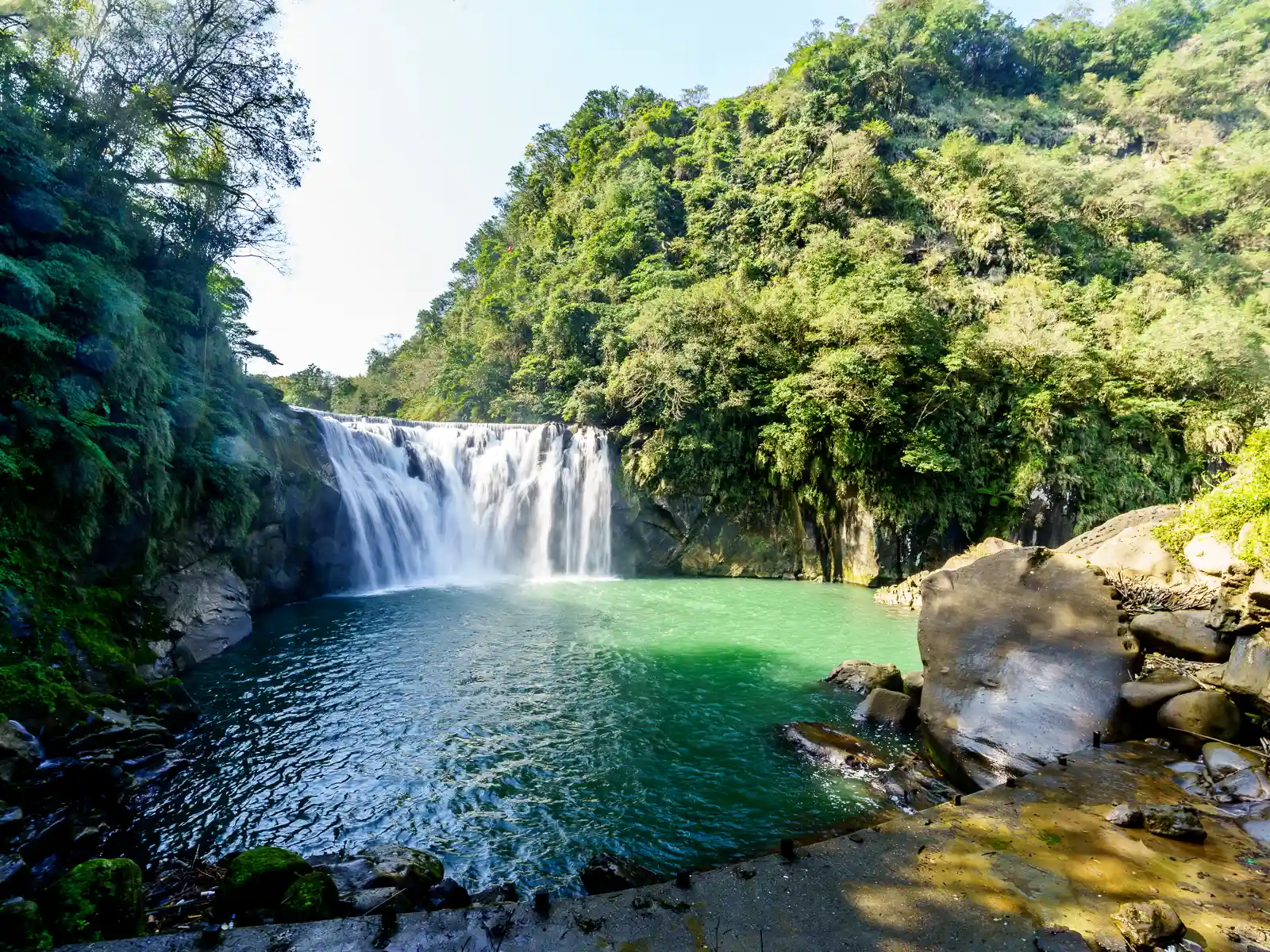
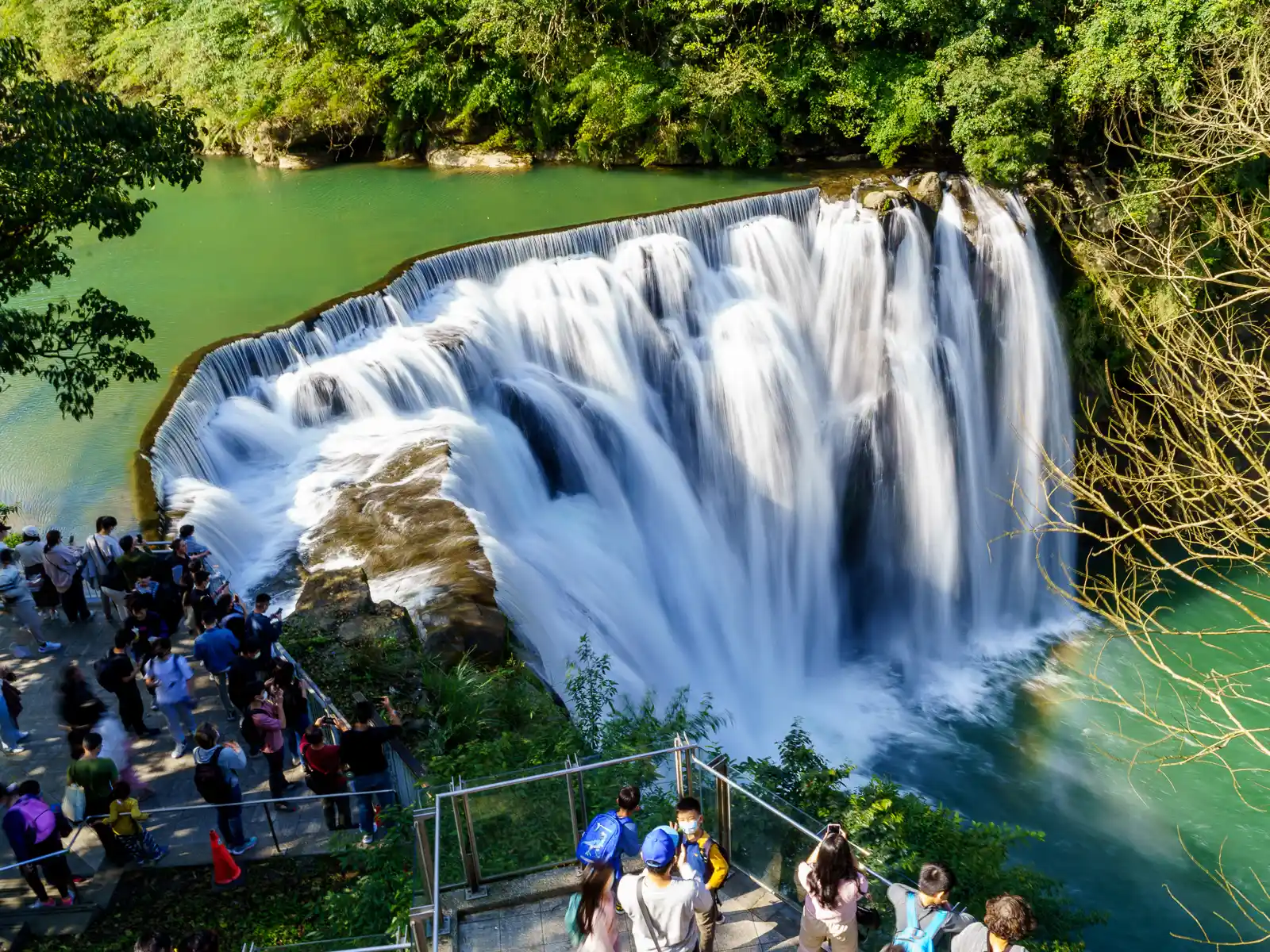
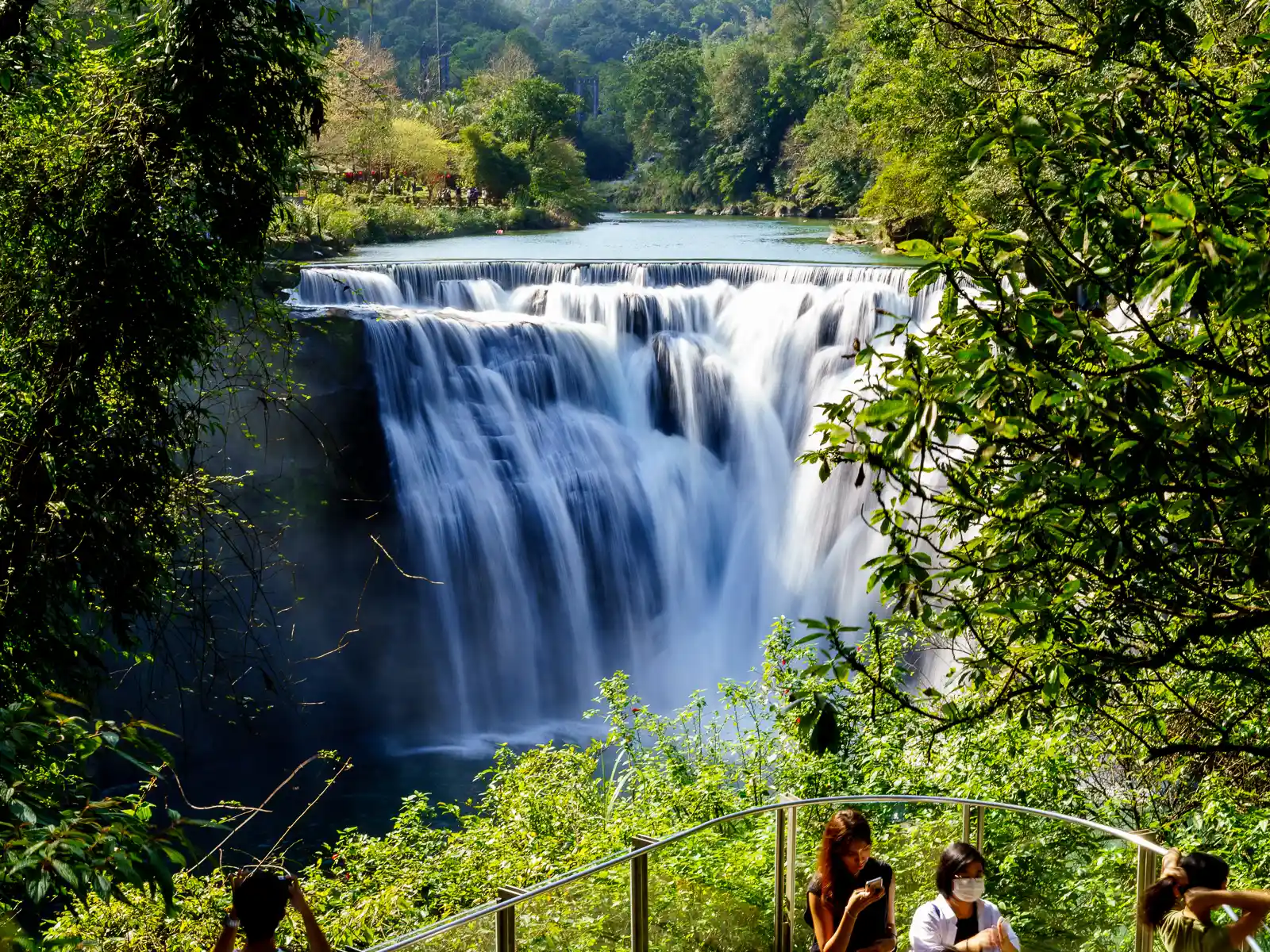
Shifen Waterfall holds a special place in the hearts of Taiwanese as one of the most spectacular and accessible waterfalls on the island. Standing at approximately 20 meters (66 feet) tall and stretching across 40 meters (131 feet) in width, the waterfall’s horseshoe shape and impressive year-round flow have earned it the title of the “Little Niagara of Taiwan”.
Even during a drought, the sheer force of water cascading down the rocky cliffs creates a mesmerizing sight, accompanied by a thunderous roar that resonates throughout the surrounding area. The waterfall is accessible via the Shifen Falls Walk trail which leads away from the parking lot at Shifen Visitor’s Center.

